Shin Chuan Computer SC620PDT-BW Portable Data Terminal User Manual SC600 SC620 En 060921 rev by Joy
Shin Chuan Computer Co., Ltd. Portable Data Terminal SC600 SC620 En 060921 rev by Joy
Contents
User manual 1 1 rev2
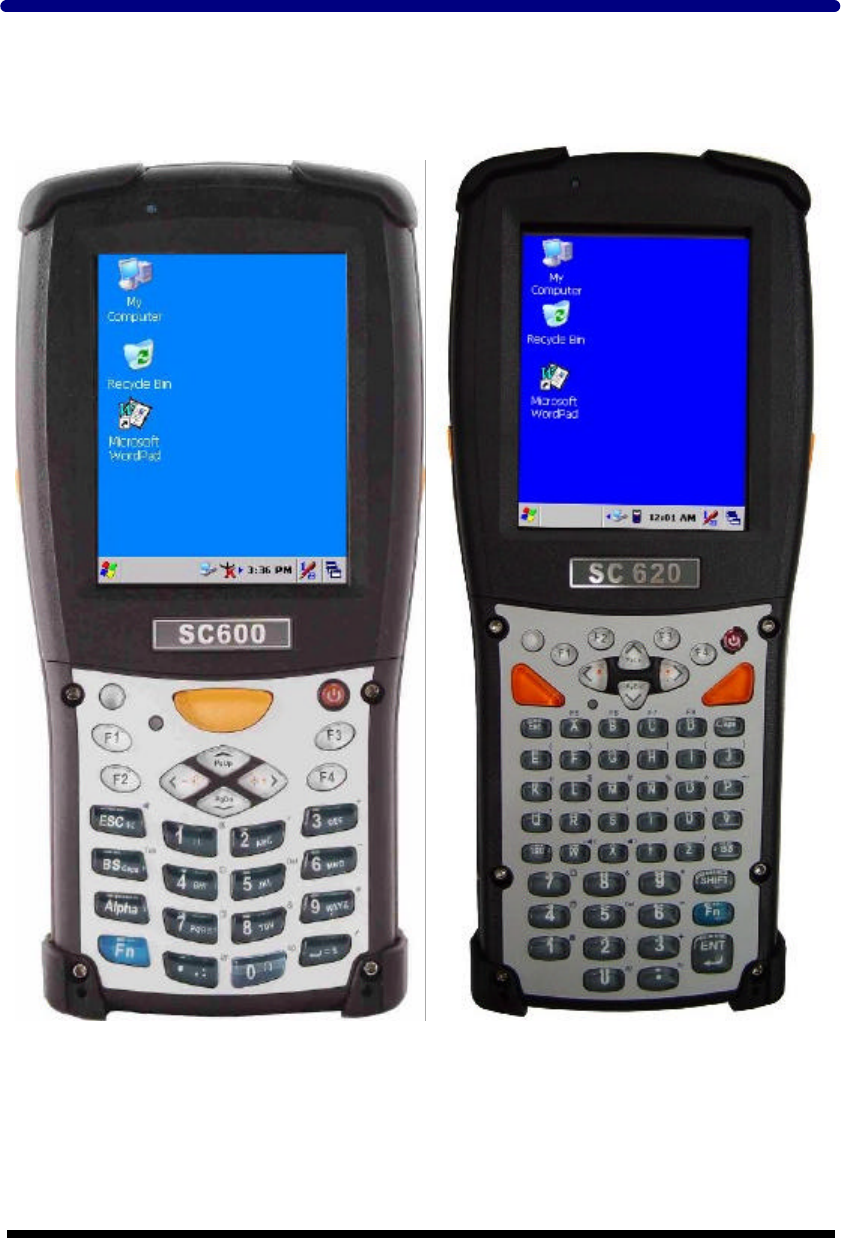
SC600 / SC620 User’s Manual
WinCE. NET Rugged Portable Data Terminal
September/21/2006 Ver: 1.3

Table of Contents
Chapter 1. Introduction ........................................................................1-1
1.1 About this Manual............................................................................1-1
1.2 User and Product Safety...................................................................1-2
1.3 Battery Safety...................................................................................1-3
1.4 FCC Statement.................................................................................1-4
1.5 Recycling & disposal instructions. ..................................................1-5
1.6 Regulatory information....................................................................1-5
1.7 Product Labeling..............................................................................1-6
1.8 System Specifications....................................................................1-10
1.9 Environment Standard....................................................................1-12
1.10 Warranty and after service ...........................................................1-12
Chapter 2. Getting Started....................................................................2-1
2.1 Check the package ...........................................................................2-1
2.2 General View of the PDT.................................................................2-3
2.2.1 SC600 general view................................................................2-3
2.2.2 SC620 general view................................................................2-5
2.3 Charging the Battery Pack ...............................................................2-7
2.3.1 Installing the battery pack.......................................................2-7
2.3.2 Charging the battery pack with Power Adapter ......................2-9
2.3.3 Charging the battery pack with Single Dock ........................2-10
2.4. Handling the PDT .........................................................................2-12
2.4.1 Starting the PDT....................................................................2-12
2.4.2 Power on / off........................................................................2-12
2.4.3 Calibration of the touch Screen.............................................2-13
2.4.4 Adjusting the brightness........................................................2-13
2.4.5 To mute the Sound ................................................................2-14
2.4.6 Using the Stylus ....................................................................2-14
2.4.7 Using the SC600 Keypad......................................................2-14
2.4.8 Using the SC620 Keypad......................................................2-23
2.4.9 Using the Ear/Microphone....................................................2-33
2.5 Navigating the Display ..................................................................2-34
2.5.1 Setting Time and Date...........................................................2-34
2.5.2 Entering the Data ..................................................................2-34
2.5.3 The Command Bar................................................................2-35
2.5.4 The Task Bar .........................................................................2-35

2.5.5 The Soft Keypad ...................................................................2-36
2.5.6 Setting Up Wireless LAN RF ...............................................2-36
2.5.7 Reading barcodes, 1D laser version......................................2-37
2.5.8 Reading barcodes, 2D CMOS version..................................2-38
2.5.8 Help.......................................................................................2-40
2.6 Power management........................................................................2-41
2.6.1 Suspend Mode.......................................................................2-41
2.6.2 Resuming ..............................................................................2-42
2.7 Resetting the PDT..........................................................................2-42
2.7.1 Software (Warm) Reset.........................................................2-42
2.7.2 Cold Reset.............................................................................2-42
Chapter 3. Setting.................................................................................3-1
3.1 Introduction......................................................................................3-1
3.2 Control Panel ...................................................................................3-1
3.2.1 BarCode Setting......................................................................3-2
3.2.2 Symbologies List ....................................................................3-8
3.2.3 Bluetooth Device Properties .................................................3-24
3.2.4 Certificates ............................................................................3-26
3.2.5 Control Center.......................................................................3-28
3.2.6 Date/Time..............................................................................3-32
3.2.7 Dialing Properties .................................................................3-33
3.2.8 Display Properties.................................................................3-35
3.2.9 Input Panel ............................................................................3-36
3.2.10 Internet Options ..................................................................3-37
3.2.11 Keyboard.............................................................................3-39
3.2.12 Network and Dial-up Connections......................................3-40
3.2.13 Owner..................................................................................3-44
3.2.14 Password .............................................................................3-45
3.2.15 PC Connection ....................................................................3-46
3.2.16 Power ..................................................................................3-47
3.2.17 Regional Settings ................................................................3-49
3.2.18 Remove Programs...............................................................3-50
3.2.19 Storage Manager .................................................................3-51
3.2.20 Stylus...................................................................................3-52
3.2.21 System.................................................................................3-53
3.2.22 Volume & Sounds Properties ..............................................3-55
3.3 Taskbar and Start Menu .................................................................3-56
Chapter 4. Communication ..................................................................4-1

4.1 Installing & Setting Up Microsoft ActiveSync................................4-1
4.1.1 Installing Microsoft ActiveSync on the Host PC....................4-1
4.1.2 Connecting PDT to Host PC...................................................4-1
4.2 Using ActiveSync.............................................................................4-1
4.2.1 Setting up a Partnership ..........................................................4-1
4.2.2 ActiveSync File Synchronization............................................4-3
4.3 Networking ......................................................................................4-3
Chapter 5. Software Applications ........................................................5-1
5.1 Introduction......................................................................................5-1
5.2 Software Applications......................................................................5-1
5.2.1 Calculator................................................................................5-1
5.2.2 Inbox .......................................................................................5-1
5.2.3 Internet Explorer ...................................................................5-10
5.2.4 Media Player.........................................................................5-13
5.2.5 Messenger .............................................................................5-13
5.2.6 Microsoft WordPad...............................................................5-14
5.2.7 Remote Connection...............................................................5-19
5.2.8 Windows Explorer ................................................................5-20
5.3 DiskOnChip ...................................................................................5-21
5.3.1 Saving to Flash......................................................................5-21
5.3.2 DiskOnChip Location...........................................................5-22
5.3.3 DiskOnChip Size ..................................................................5-22
Appendix A 2D Barcode Setting......................................................... A-1
A.1 Setup Tab........................................................................................A-1
A.1.1 Symbology Setup ..................................................................A-2
A.1.2 Decoder Setup.......................................................................A-3
A.1.3 Options..................................................................................A-4
A.2. Update Tab ....................................................................................A-5
A.3. Symbologies List...........................................................................A-6
A.3.1 Aztec......................................................................................A-6
A.3.2 Codabar .................................................................................A-7
A.3.3 Code 11 .................................................................................A-8
A.3.4 Code 128 ...............................................................................A-9
A.3.5 Code 39 ...............................................................................A-10
A.3.6 Code 49 ...............................................................................A-12
A.3.7 Code 93 ...............................................................................A-13
A.3.8 Composite Codes ................................................................A-14
A.3.9 Data Matrix .........................................................................A-15

A.3.10 EAN-8 ...............................................................................A-16
A.3.11 EAN-13 .............................................................................A-17
A.3.12 Interleaved 2 of 5 ..............................................................A-18
A.3.13 MaxiCode..........................................................................A-19
A.3.14 MicroPDF417....................................................................A-20
A.3.15 OCR-A, OCR-B, US Currency.........................................A-21
A.3.16 PDF417 .............................................................................A-33
A.3.17 Postnet...............................................................................A-34
A.3.18 QR Code............................................................................A-35
A.3.19 Reduced Space Symbology...............................................A-36
A.3.20 UPC-A...............................................................................A-37
A.3.21 UPC-E...............................................................................A-38
A.3.22 UPC-E1.............................................................................A-39
A.3.23 ISBT..................................................................................A-40
A.3.24 British Post........................................................................A-40
A.3.25 Canadian Post....................................................................A-41
A.3.26 Australian Post ..................................................................A-42
A.3.27 IATA 2 of 5........................................................................A-43
A.3.28 Codablock F......................................................................A-44
A.3.29 Japanese Post.....................................................................A-45
A.3.30 Planet Code .......................................................................A-46
A.3.31 KIX (Netherlands) Post.....................................................A-47
A.3.32 MSI....................................................................................A-48
A.3.33 TCIF Linked Code 39 .......................................................A-49
A.3.34 Mayrix 2 of 5.....................................................................A-50
A.3.35 Korean Post.......................................................................A-51

1-1
Chapter 1. Introduction
Congratulations on purchasing the SC620 Portable Data Terminal (PDT), a Microsoft
Windows®CE .Net rugged PDT. Its special combination of features makes it perfect for
using in a wide range of applications. These features as:
λ Intel® XScaleTM PXA255 400MHz 32 bits RISC Processor
λ Windows® CE .NET 4.2 Operating System
λ 64/128/256 MB SDRAM & 64/128 MB Flash ROM
λ Open Architecture: User Accessible SD/CF/PCMCIA Slot
λ 240 x 320, 3.5” Color TFT Display with Touch Panel
λ 1 Numeric Keyboards with LED backlight
λ 802.11b Radio Support (Bluetooth Optional)
λ Integrated 1D or 2D Barcode Scanner
1.1 About this Manual
The following chapters contained in this manual are:
Chapter 1: Introduction, General information about the PDT.
Chapter 2: Getting started, Describe the basic use of the PDT.
Chapter 3: Setting, Provide basic instructions for customizing
the PDT.
Chapter 4: Communication, Describe how to use all kinds of
communication of the PDT.
Chapter 5: Software Application, Describe the installed applications on the
PDT.
Appendix A. 2D Barcode Setting Provide instructions for customizing the 2D
Engine.

1-2
1.2 User and Product Safety
l Do not stare into the laser or LED beam directly or shine it into eyes.
l Never use strong pressure onto the screen or subject it to severe impact, as the
LCD panel could become cracked and possibility cause personal injury. If the
LCD panel is broken, never touch the liquid inside because the liquid irritates the
skin.
l Although the PDT has passed the test of IP54 standard for water and dust
resistance, avoid prolonged exposure to rain or other concentrated moisture.
Such condition exceeds the IP54 standard, and could result in water or other
contaminants entering into the PDT.
l Use only the original approved AC Adapter with the PDT. Use of an unapproved
AC Adapter could result in electrical problems, or even cause a fire or electrical
shock to the user.
l Do not disassemble the PDT. Servicing should be done by supplier only. If the
PDT or accessories gets damaged due to wrong handling or unauthorized repair,
warranty is void. In case the warranty seals are broken, warranty is void too.
l Make regularly back-ups of all important data.
l Under no circumstance will supplier be liable for any direct, indirect,
consequential or incidental damages baring out of the use or inability to use the
hardware and software and/or any data loss, even if supplier has been informed
about the possibility of such damages.

1-3
1.3 Battery Safety
Lithium-ion battery packs might get hot, explode, ignite and/or cause serious injury if
exploded by abusive using. Please follow the safety warnings listed as below:
l Do not throw the battery pack in fire. Do not expose the battery to high
temperatures.
l Do not connect the positive battery pack with negative battery pack to each other
with any metal object (like wire).
l Do not carry or store battery pack together with metal objects.
l Do not pierce the battery pack with nails or drills, strike the battery pack with a
hammer, step on the battery pack or otherwise expose it to strong impacts,
shocks or excessive force.
l Do not solder onto the battery pack.
l Do not expose battery pack to liquid or allow the battery contacts to get wet.
l Do not disassemble or modify the battery pack. The battery pack contains safety
and protection measures, which, if damaged, may cause the battery pack to
generate heat, explode or ignite.
l Do not discharge the battery pack using any device except for the specified
device. When it is used in devices other than the specified devices, the battery
pack can be damaged or its life expectancy reduced. If the device causes any
abnormal current to flow, it may cause the battery pack to become hot, explode
or ignite and cause serious injury.
l In the event the battery pack leaks and the fluid gets into one’s eye, do not rub
the eye. Rinse well with water and immediately seek medical care. If left
untreated, the battery fluid could cause damage to the eye.

1-4
1.4 FCC Statement
This equipment has been tested and found to comply with the limits for a Class B
digital device, pursuant to Part 15 of the FCC Rules. These limits are designed to
provide reasonable protection against harmful interference in a residential installation.
This equipment can radiate radio frequency energy and, if not installed and used in
accordance with the instructions, may cause harmful interference to radio
communications. However, there is no guarantee that interference will not occur in a
particular installation. If this equipment does cause harmful interference to radio or
television reception, which can be determined by turning the equipment off and on,
the user is encouraged to try to correct the interference by one of the following
measures:
l Reorient or relocate the receiving antenna.
l Increase the distance between the equipment and receiver.
l Connect the equipment into an outlet on a circuit different from that to which
the receiver is connected.
l Consult the dealer or an experienced radio/TV technician for help.
FCC Caution: Any changes or modifications not expressly approved by the party
responsible for compliance could void the user's authority to operate this equipment.
This device complies with Part 15 of the FCC Rules. Operation is subject to the
following two conditions: (1) This device may not cause harmful interference, and (2)
this device must accept any interference received, including interference that may
cause undesired operation.
IMPORTANT NOTE:
FCC Radiation Exposure Statement:
This equipment complies with FCC RF radiation exposure limits set forth for an
uncontrolled environment. To maintain compliance with FCC RF exposure
compliance requirements, please avoid direct contact to the transmitting antenna
during transmitting.
This transmitter must not be co-located or operated in conjunction with any other antenna
or transmitter, except the built-in Bluetooth device which has been certified with this product.
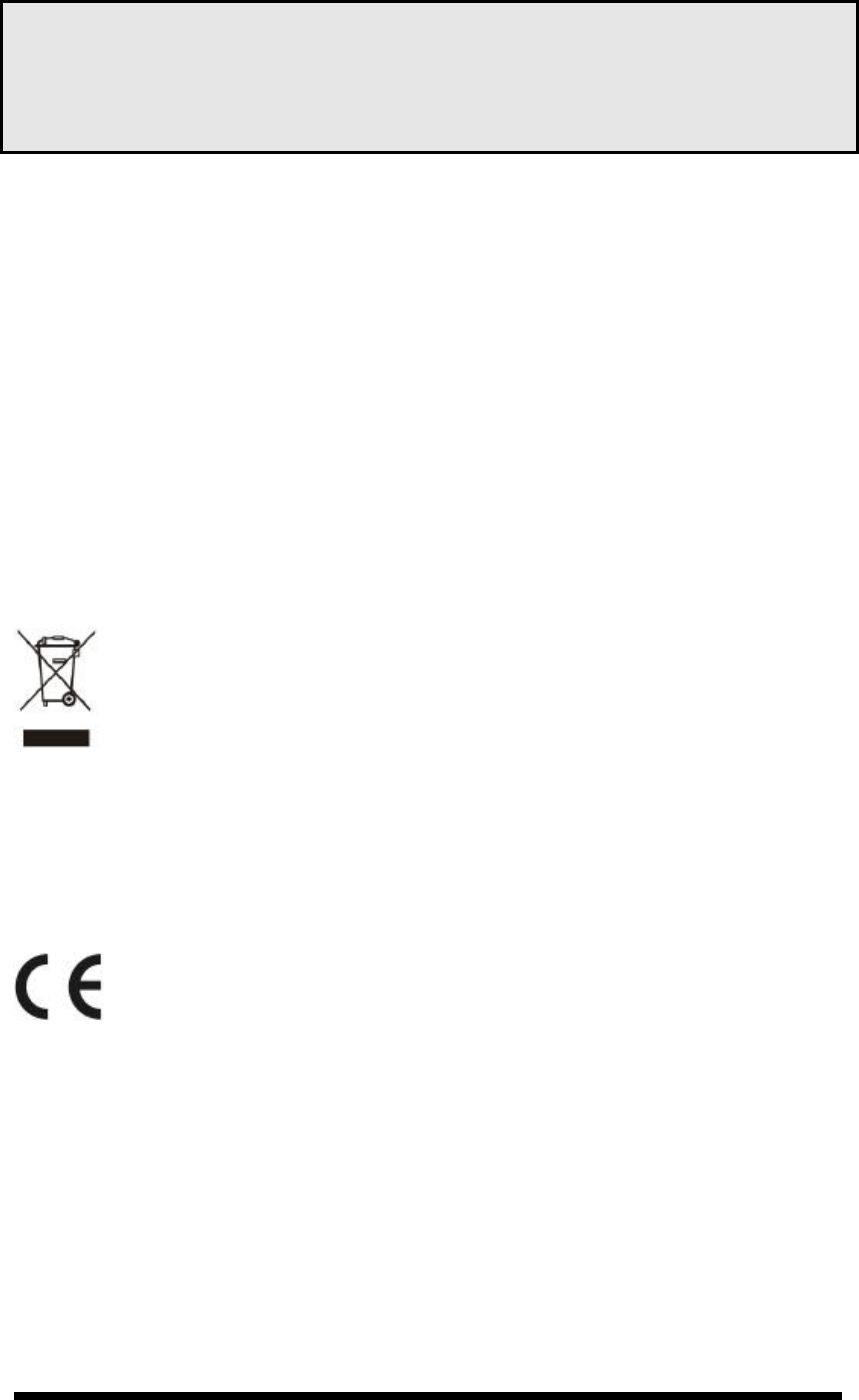
1-5
Caution: The availability of some specific channels and/or operational
frequency bands are country dependent and are firmware
programmed at the factory to match the intended destination. The
firmware setting is not accessible by the end user.
LED AND LASER SAFETY INFORMATION
l Class II LED/Laser Product
l Do not stare at the LED/Laser or shine into eyes
l Do not allow young children to use the product without adult supervision
l Do not replace/repair the LED/Laser, these are not user replaceable
l Do not shine the LED/Laser on a shiny reflective surface
1.5 Recycling & disposal instructions.
Do not throw this product in the home waste bin. For proper end-of-life
treatment consult the
Environmental care section of www.sccltd.com.tw
1.6 Regulatory information.
For CE, FCC, RoHS and other Document of Conformities, consult the
Regulatory section of www.sccltd.com.tw
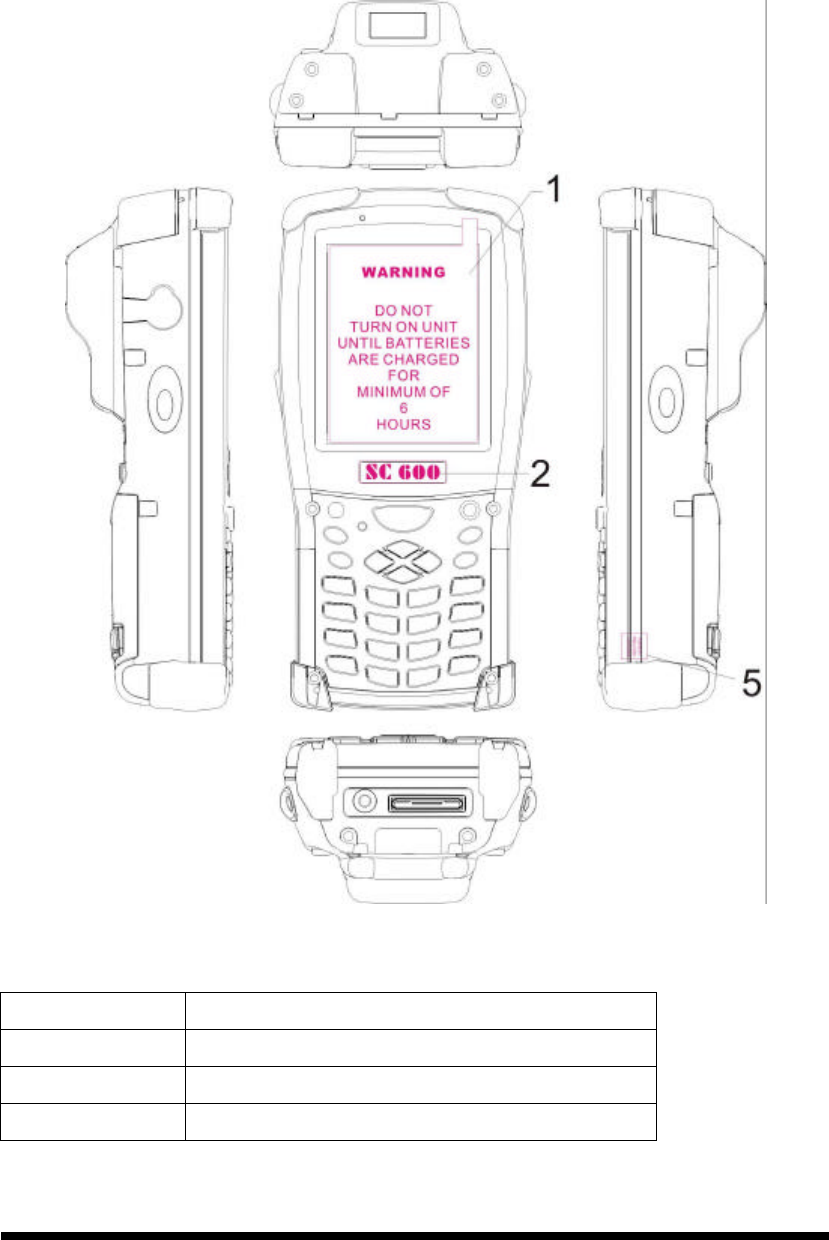
1-6
1.7 Product Labeling
The PDT has several labels as showed in Figure 1-1 to 1-4.
A. SC600
Figure 1-1 Product Labeling (Front side view)
Label nr. Description
1 LCD panel protection film
2 SC600 logo
5 Warranty seal PDT
Table 1-1 Front labeling
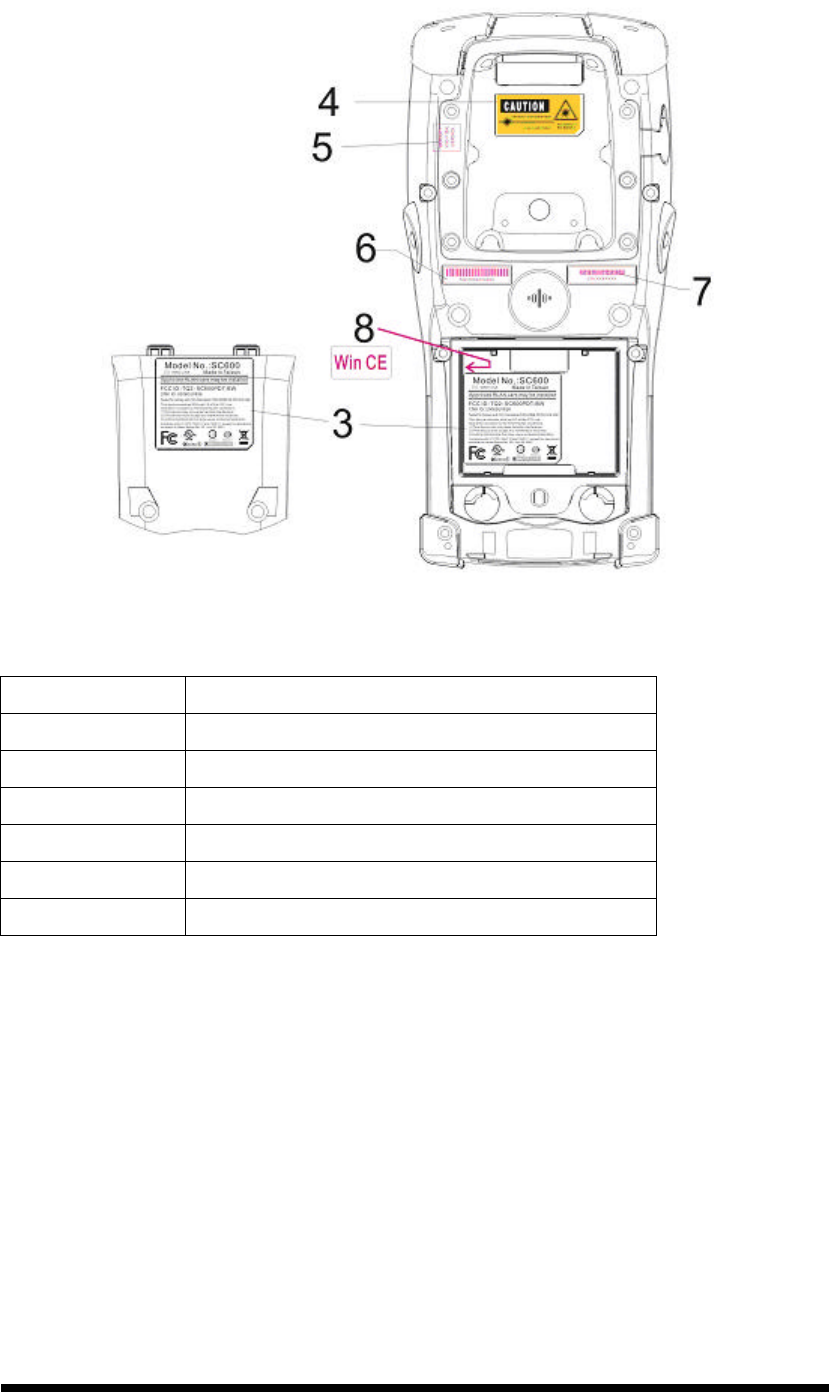
1-7
Figure 1-2 Product Labeling (Back side view)
Label nr. Description
3 System and regulatory label
4 LED/Laser radiation warning label
5 Warranty label bar code reader
6 Serial number
7 Configuration number
8 Windows CE .NET label
Table 1-2 Rear labeling
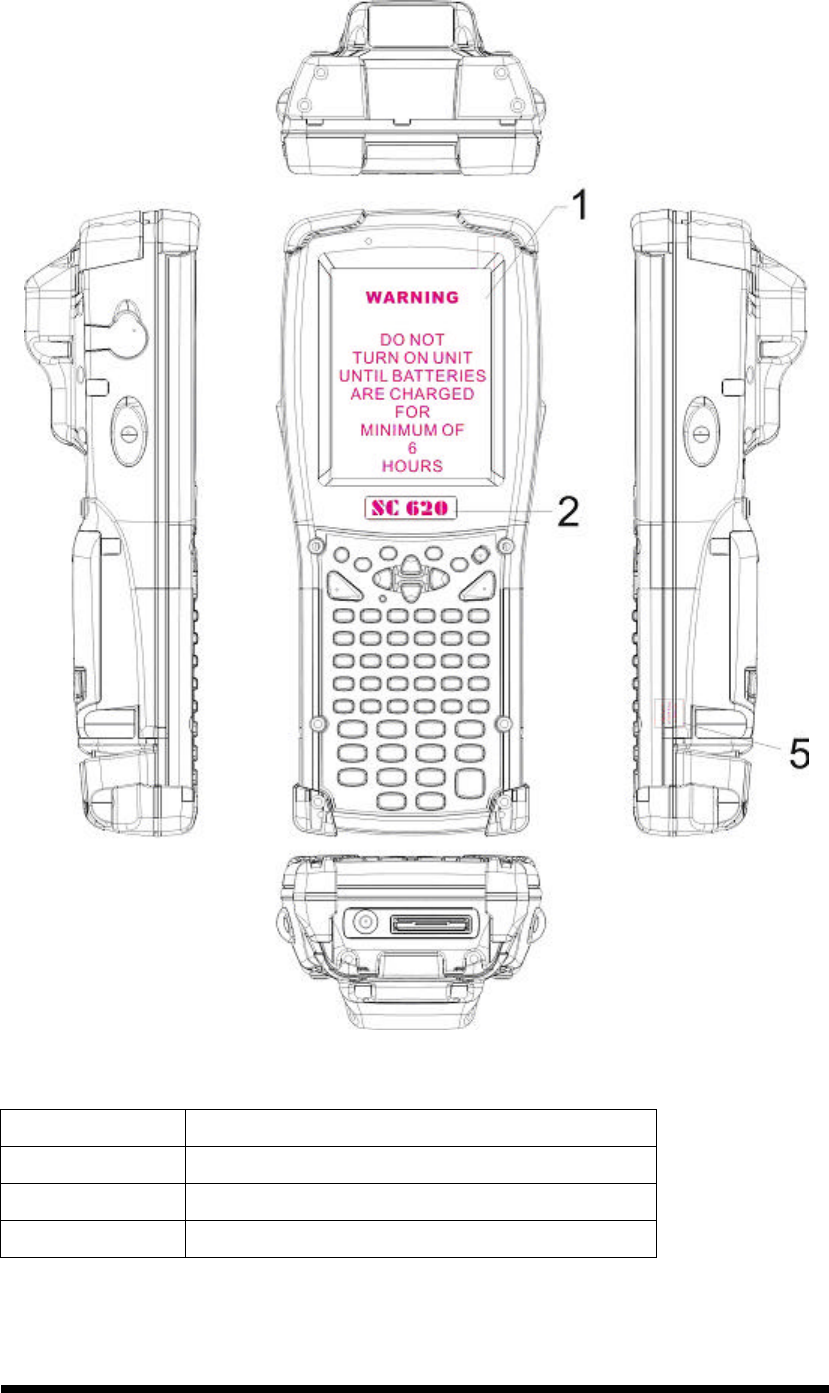
1-8
B. SC620
Figure 1-3 Product Labeling (Front side view)
Label nr. Description
1 LCD panel protection film
2 SC620 logo
5 Warranty seal PDT
Table 1-3 Front labeling
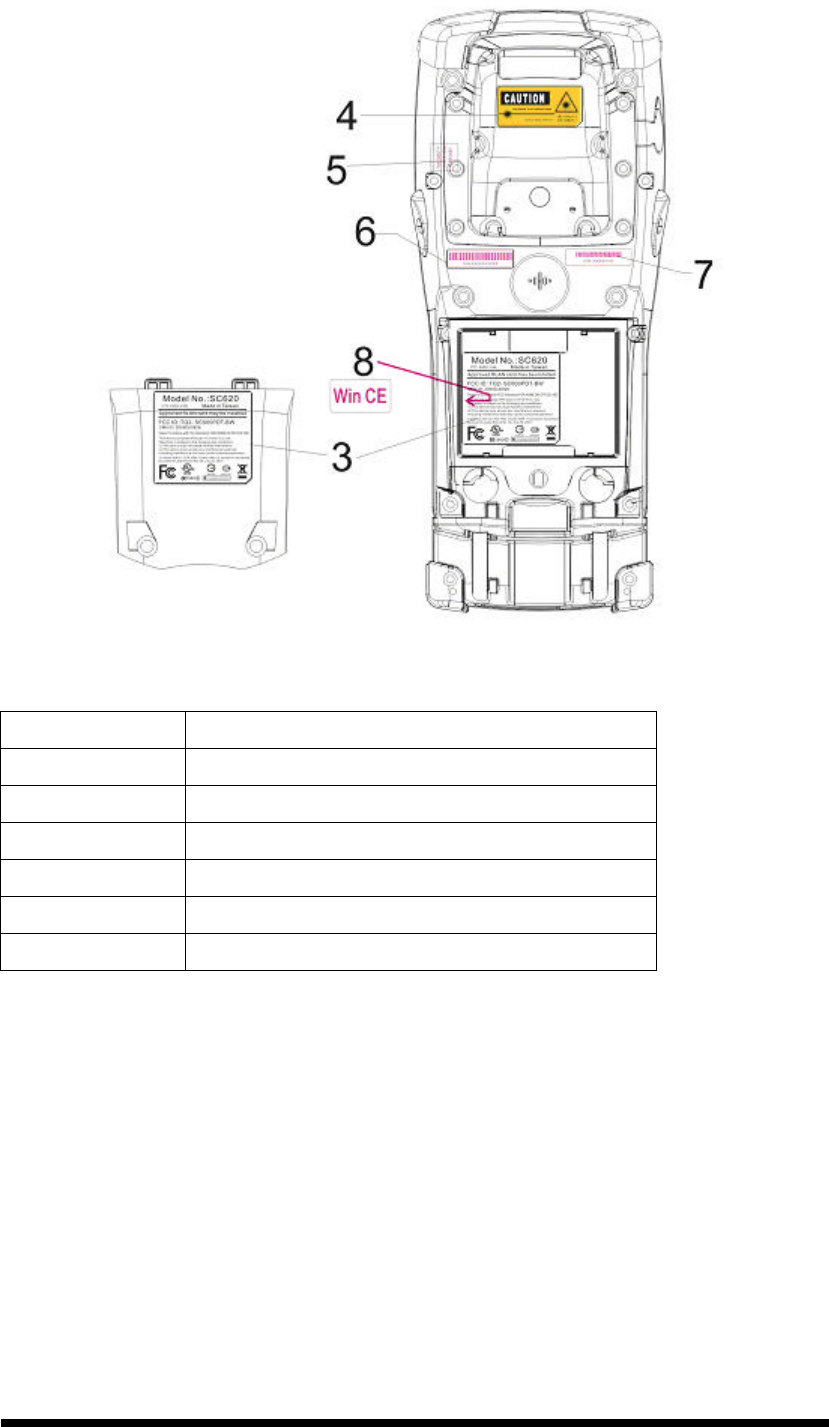
1-9
Figure 1-4 Product Labeling (Back side view)
Label nr. Description
3 System and regulatory label
4 LED/Laser radiation warning label
5 Warranty label bar code reader
6 Serial number
7 Configuration number
8 Windows CE .NET label
Table 1-4 Rear labeling

1-10
1.8 System Specifications
The SC600 / SC620 detailed specifications as follows. Unless otherwise noted, all the
specifications are subject to change without prior notification.
Table 1-5 System Specification
SC600 / SC620
Processor - 400MHz Intel PXA255 32 bits RISC CPU
Memory - 64 or 128MB Flash ROM
- 64,128 or 256MB SDRAM
Display - 240 x 320 3.5” TFT 256K Color LCD with LED
backlight
Audio
- One mono speaker
- 2.5mm DIA Stereo Earphone Jack with Microphone
input
Radio Support - Wireless LAN: 802.11b
- Bluetooth: Class II (optional)
Communication Ports
- USB: Support USB v1.1 both host and client.
(PDT and Cradle)
- Serial: RS232 via optional cable or Cradle.
Scan Engine - Default: Opticon Laser (1D) Engine
- Optional: HHP 2D Imager.
Expansion Slot
- One SD Card Slot
(SD memory only, no SDIO support)
- One Compact Flash type-II Slot
(Availability depends of PDT model)
LED
- One Triple-Color LED for Charger Indicator and
Alarm Notification
- One Dual-Color LED for Scanner Indicator

1-11
SC600 / SC620
Power System
- Standard Li-Ion Battery Pack, 3.7V, 3000mAh
- Advanced Smart Battery with Gas-Gauge
- Built-in Battery Charger
- 2.4V/15mAh rechargeable backup battery
- One Battery Cover Sensor Switch
- Power Adapter: 100~240V AC, 50/60Hz Input ;
5VDC/2.6A, 3A Output
SC600
- One Power Button
- Three Barcode Scanner Buttons
- Four Navigation Buttons
- Four Application Buttons
- Sixteen Alpha-Numeric Keypad
- One Pistol Trigger Button
- One Application Hot Key
Keypad / Buttons
SC620
- One Power Button
- Four Barcode Scanner Buttons
- Four Navigation Buttons
- Four Application Buttons
- Forty-four Alpha-Numeric Keypad
- One Pistol Trigger Button
- One Application Hot Key
SC600
- Dimensions:
L : 192.5mm
W: 91.3mm / 78mm
H: 60.6mm / 42.2mm
- Weight: 560g with Standard Battery Pack
500g without Battery Pack
Dimensions and
Weight
SC620
- Dimensions:
L : 220mm
W: 91.3mm / 78mm
H: 60.6mm / 42.2mm
- Weight: 660g with Standard Battery Pack
600g without Battery Pack
Color - Black
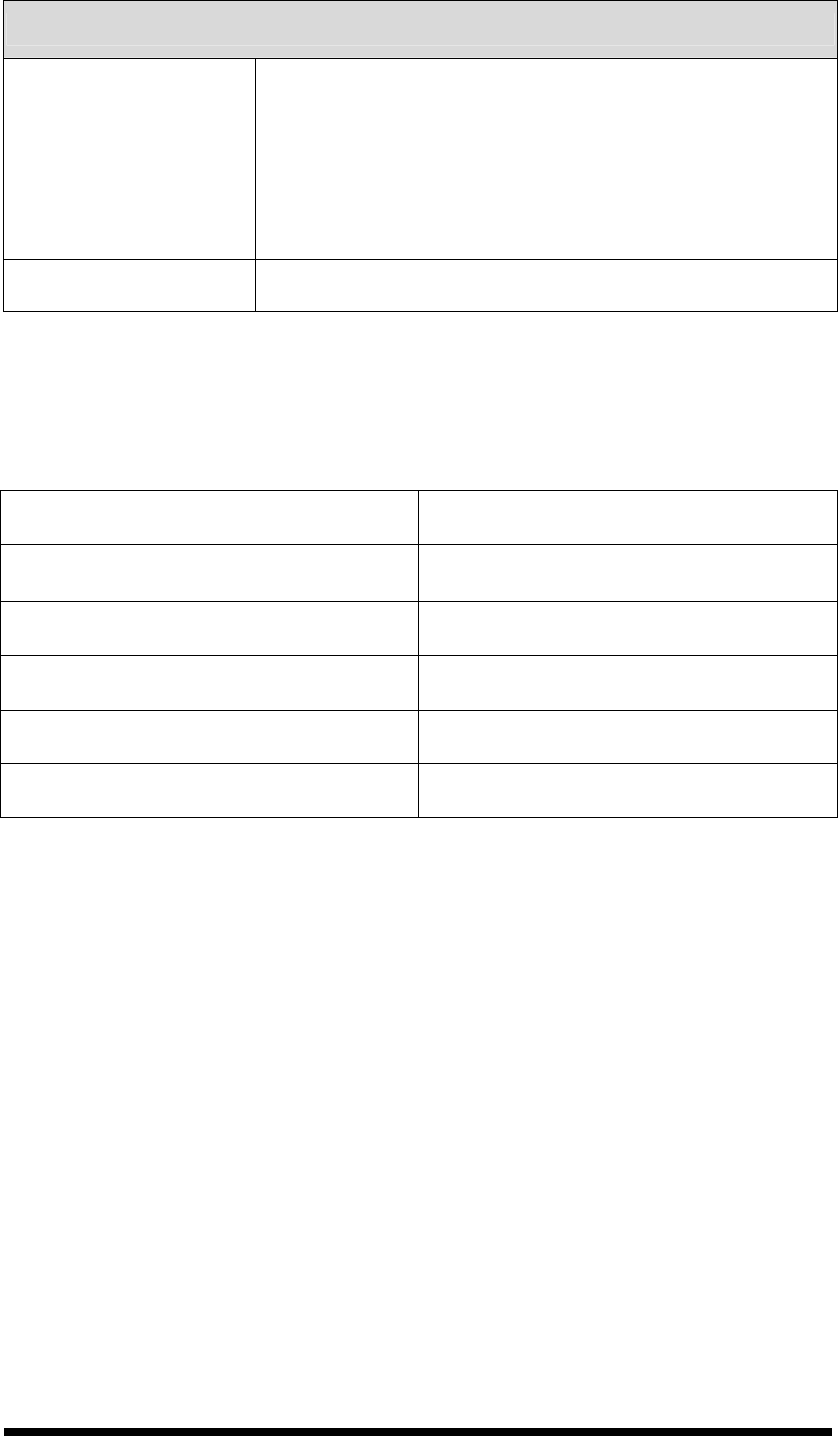
1-12
SC600 / SC620
Peripherals and
Accessories
- Optional: RS232 Serial Cable for Terminal / USB
Host Cable for Terminal / High-Capacity Li-Ion
Battery Pack (3.7V, 4000 mAh) / RFID Card Cover /
Single Dock / Pistol Grip/ 4 Slot Battery Charger /
Car Adapter / Holster / Protect Film
Software - Microsoft Windows CE.NET 4.2 Professional
1.9 Environment Standard
Table 1-6 Environment Standards
Operating Temperature 14oF ~ 122oF( -10oC ~ 50oC)
Storage Temperature -4oF ~ 158oF (-20oC ~ 70oC)
Humidity 5% ~ 80% (non-condensing)
Drop 5ft (1.5m) Drop to Concrete
Water & Dust proof IP54 Certificated & IP64 Compliant
Vibration MIL STD 810F
1.10 Warranty and after service
Should this PDT be malfunctioned, please contact your original retailer providing
information about the product name, the serial number, and the details about the
problem.
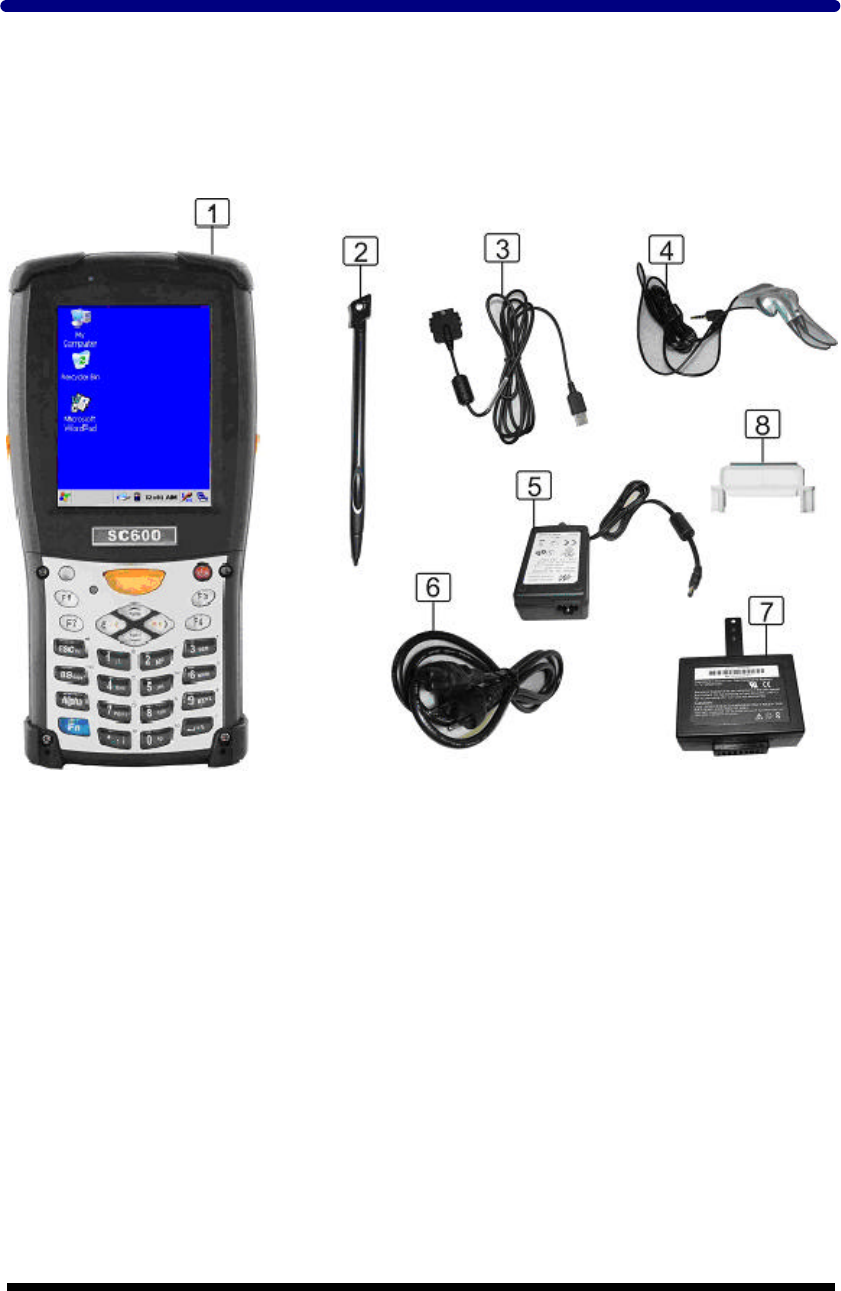
2-1
Chapter 2. Getting Started
2.1 Check the package
Open the package and check all the parts are inside without shortage and damage:
A. SC600
Figure 2-1 Inside the package
1. SC600 Terminal
2. Stylus
3. USB Client Cable for Terminal
4. Earphone/ Microphone Set
5. Standard AC Adapter 5VDC/2.6A
6. AC Power Cord
7. Standard Battery Pack (3.7V, 3000 mAh)
8. CF Support Guide
9. Quick Guide (not shown in the picture)
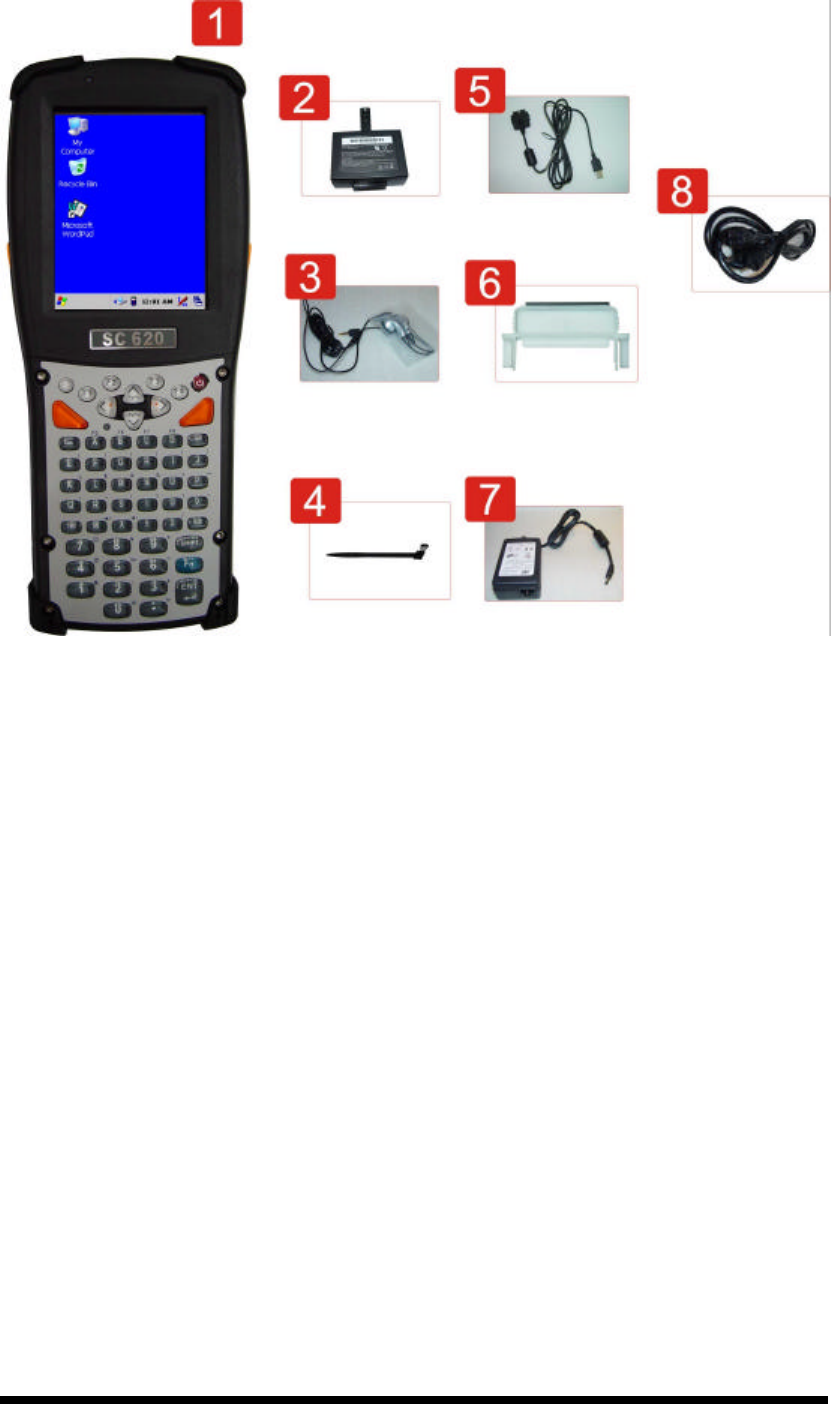
2-2
B. SC620
Figure 2-2 Inside the package
1. SC620 Terminal
2. Standard Battery Pack (3.7V, 3000 mAh)
3. Earphone/ Microphone Set
4. Stylus
5. USB Client Cable for Terminal
6. CF Support Guide
7. Standard AC Adapter 5VDC/2.6A
8. AC Power Cord
9. Quick Guide (not shown in the picture)
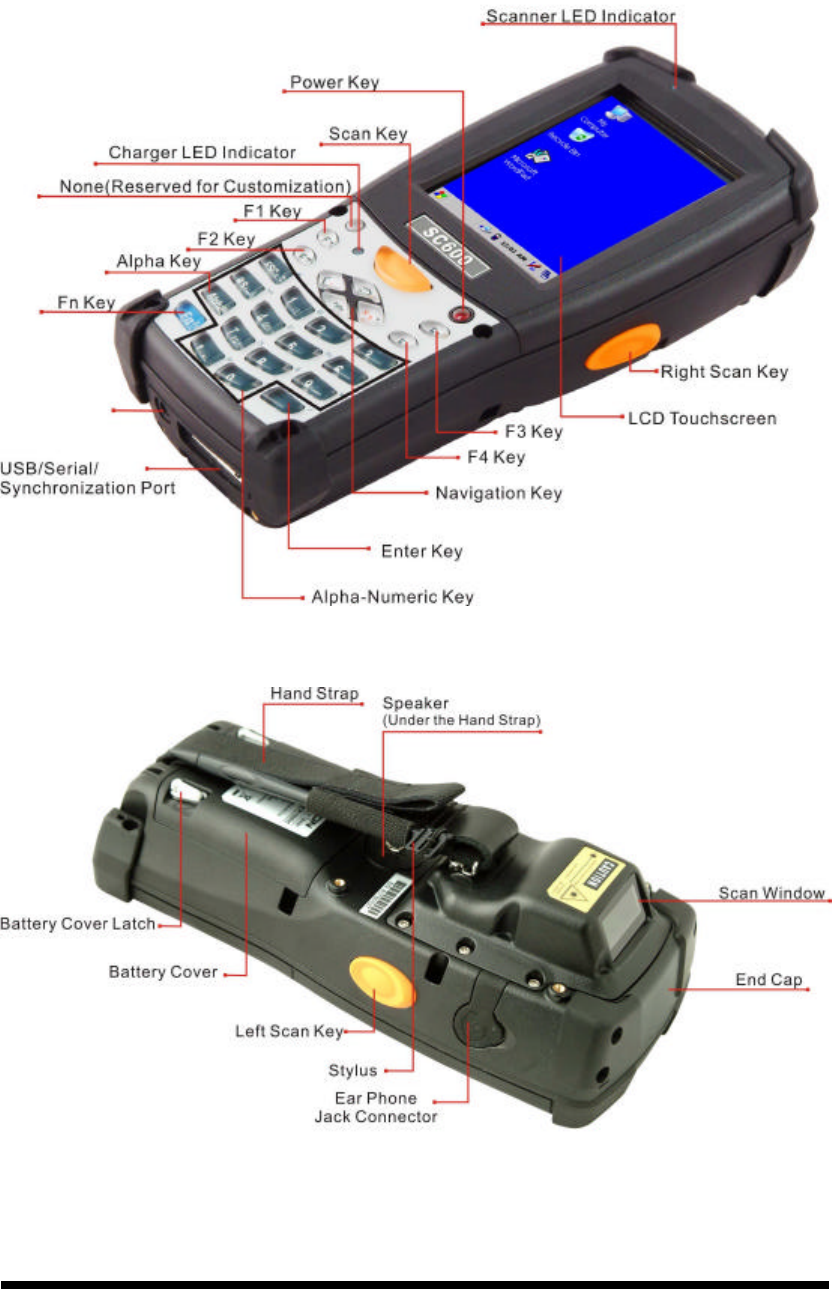
2-3
2.2 General View of the PDT
2.2.1 SC600 general view
Figure 2-3 SC600 front side view
Figure 2-4 SC600 back side view
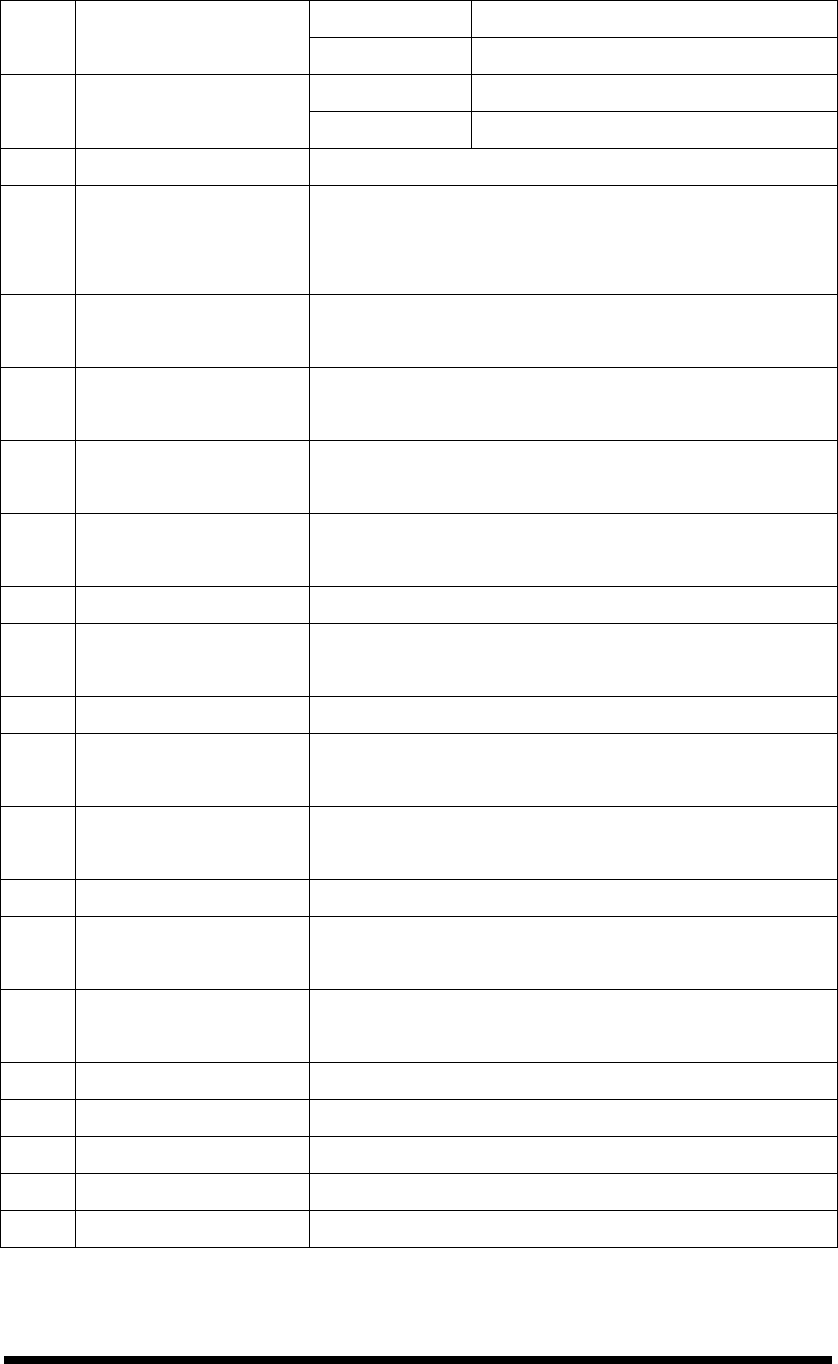
2-4
Table 2-1 Description of SC600 General View
“Red” color Reading barcode 1 Scanner LED Indicator
“Green” color Successful reading
“Red” color Charging battery 2 Charge LED Indicator
“Green” color Battery charged full
3 LCM / Touch Panel Do specific action through touch panel by stylus
4 Left Scan key
Right Scan key
Scan key
Start scanning the barcode by pressing any one of
these three scan keys
5 Power key Puts the terminal into and wakes the terminal from
suspend mode.
6 F1 ~ F4 key The four application keys, hot keys of application
program defined by end user.
7 Navigation key Navigation keys for left, right, up and down
directions
8 Alpha-Numeric keys Numeric keys, Change to Alpha keys after pressing
Alpha key.
9 Alpha key Toggle Alpha-mode for Alpha-Numeric keys
10 Fn key This key is used in combination with other keys to
type special characters and perform system functions.
11 Enter key This key confirms data entry
12 Earphone Jack
Connector
A connector to plug a earphone
13 USB / Serial /
Synchronization port
A connector to support USB Host/Client and serial
functions
14 Scan window A window for scanning of barcode reader
15 Stylus Use the stylus for selecting items and entering
information.
16 Battery Cover Protect Battery pack, keep the switch of battery cover
to leave system from suspend mode
17 Battery cover Latch To keep Battery Cover locked
18 Hand Strap This strap can be sealed tighter or looser
19 Speaker 1.5W speaker for audio sound
20 DC Power Jack A connector to support AC power.
21 End Cap Protect CF slot and SD slot from dust and water
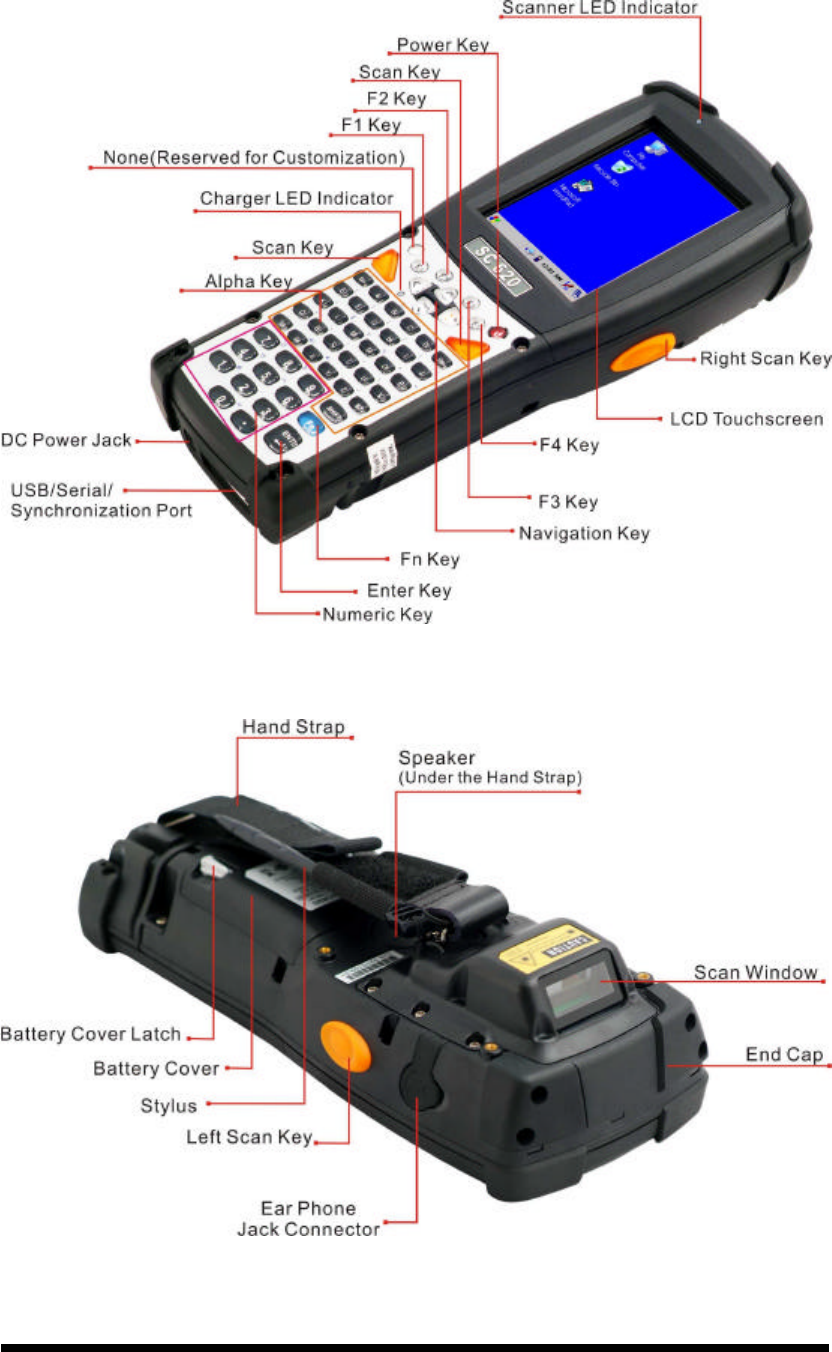
2-5
2.2.2 SC620 general view
Figure 2-5 SC6200 front side view
Figure 2-6 SC620 back side view
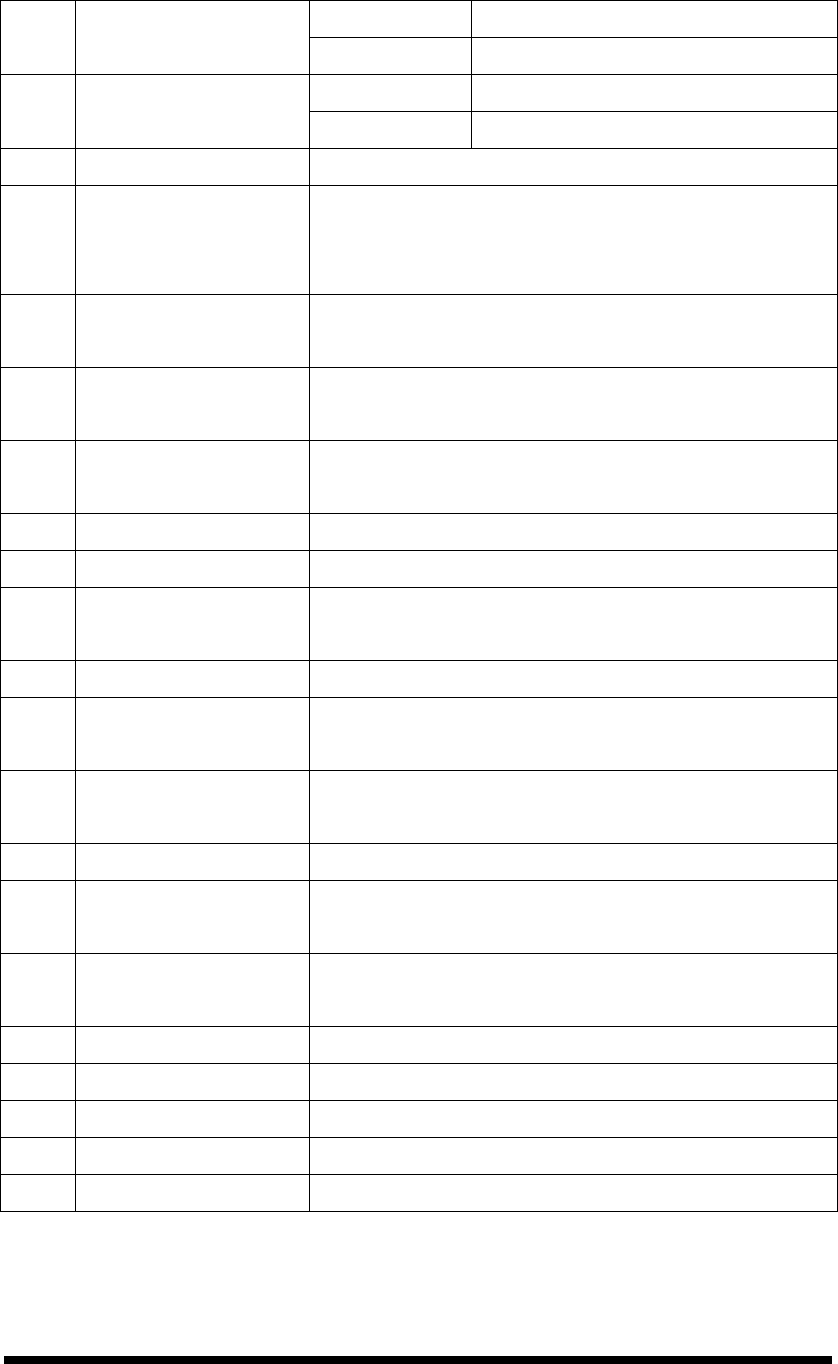
2-6
Table 2-2 Description of SC620 General View
“Red” color Reading barcode 1 Scanner LED Indicator
“Green” color Successful reading
“Red” color Charging battery 2 Charge LED Indicator
“Green” color Battery charged full
3 LCM / Touch Panel Do specific action through touch panel by stylus
4 Left Scan key
Right Scan key
Scan key
Start scanning the barcode by pressing any one of
these three scan keys
5 Power key Puts the terminal into and wakes the terminal from
suspend mode.
6 F1 ~ F4 key The four application keys, hot keys of application
program defined by end user.
7 Navigation key Navigation keys for left, right, up and down
directions
8 Alpha keys Numeric keys.
9 Numeric keys Alpha key.
10 Fn key This key is used in combination with other keys to
type special characters and perform system functions.
11 Enter key This key confirms data entry
12 Earphone Jack
Connector
A connector to plug a earphone
13 USB / Serial /
Synchronization port
A connector to support USB Host/Client and serial
functions
14 Scan window A window for scanning of barcode reader
15 Stylus Use the stylus for selecting items and entering
information.
16 Battery Cover Protect Battery pack, keep the switch of battery cover
to leave system from suspend mode
17 Battery cover Latch To keep Battery Cover locked
18 Hand Strap This strap can be sealed tighter or looser
19 Speaker 1.5W speaker for audio sound
20 DC Power Jack A connector to support AC power.
21 End Cap Protect CF slot and SD slot from dust and water
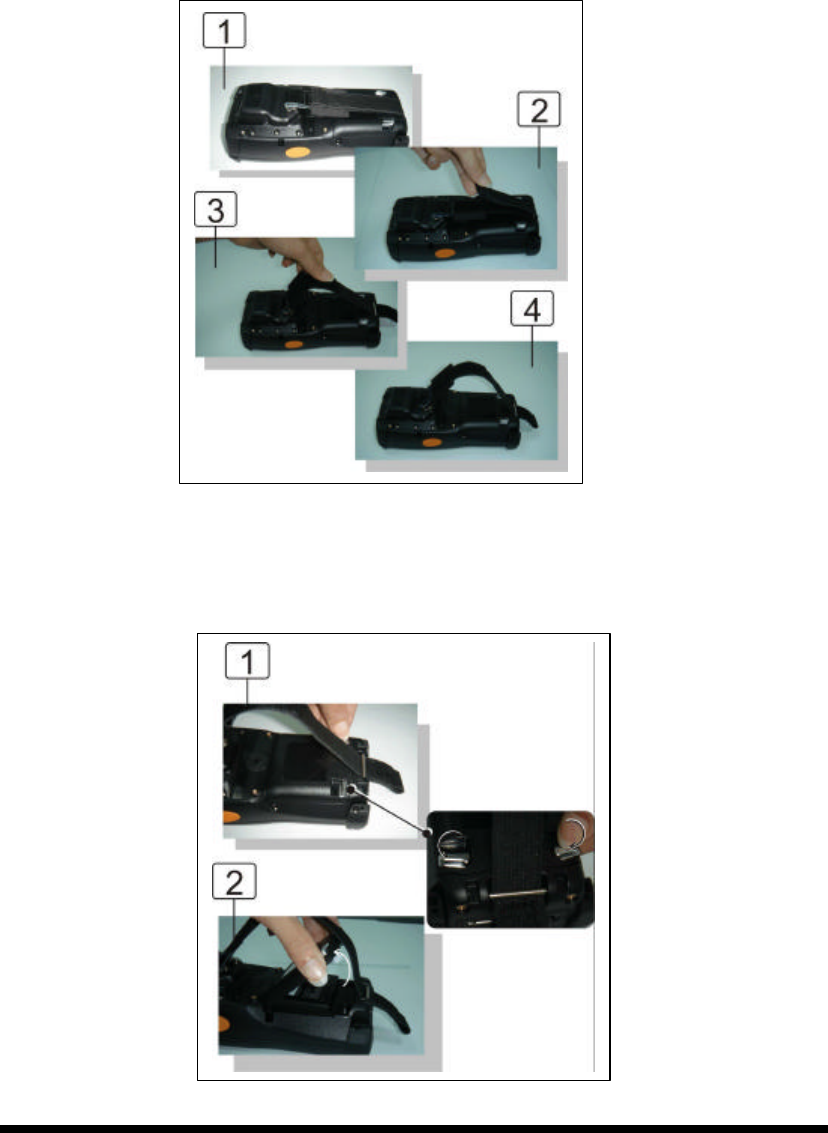
2-7
2.3 Charging the Battery Pack
Before using the PDT, perform the basic procedure of charging the battery pack
through the following steps.
2.3.1 Installing the battery pack
1. On the PDT attached with a hand-strap, detach and loose the hand-strap.
Figure 2-7 Release the Hand strap from PDT
2. Turn the locking screws (right and left) downwards and lift the battery cover away
from the PDT.
Figure 2-8 Detach the battery cover from PDT
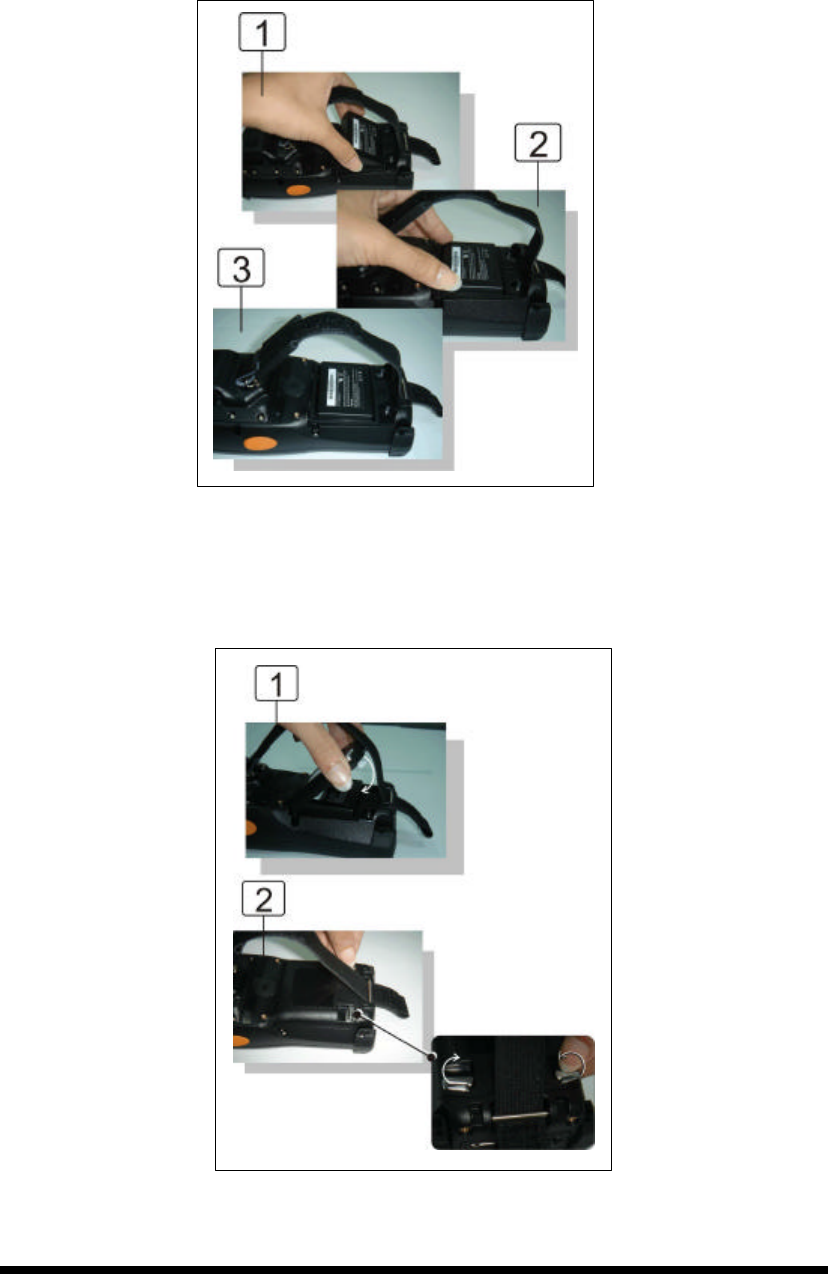
2-8
3. Insert the battery pack into the battery compartment with the label facing out, and
ensuring the battery snaps into place.
Figure 2-9 Insert the battery pack
4. Replace the battery cover by inserting the top first, and then press the bottom in firmly.
Turn the locking screws (right and left) upwards to secure the cover to the PDT.
Figure 2-10 Replace the battery cover
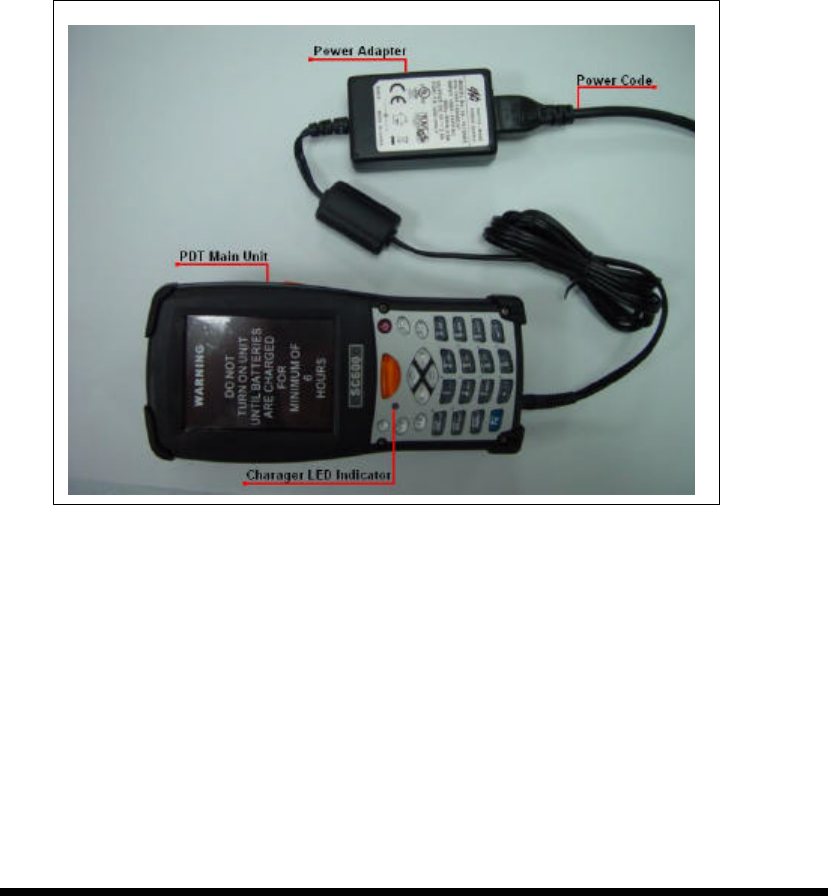
2-9
5. Charge time. For the first time to charge the battery pack needs approximately 6
hours. Subsequent charging time needs approximately 4 hours.
◆. When charging the battery pack, the charge LED indicator on the PDT turns on
Red. After the battery pack is fully charged, the charge LED indicator turns to
Green.
2.3.2 Charging the battery pack with Power Adapter
1. Connect the Power cord to the Power adapter.
2. Plug in the connector of the power adapter.
3. Connect the power cord to a power source.
Figure 2-11 Charging with power adapter
◆ When charging the battery pack, the charge LED indicator on the PDT turns on
Red.
◆ After the battery pack is fully charged, the charge LED indicator turns to Green.
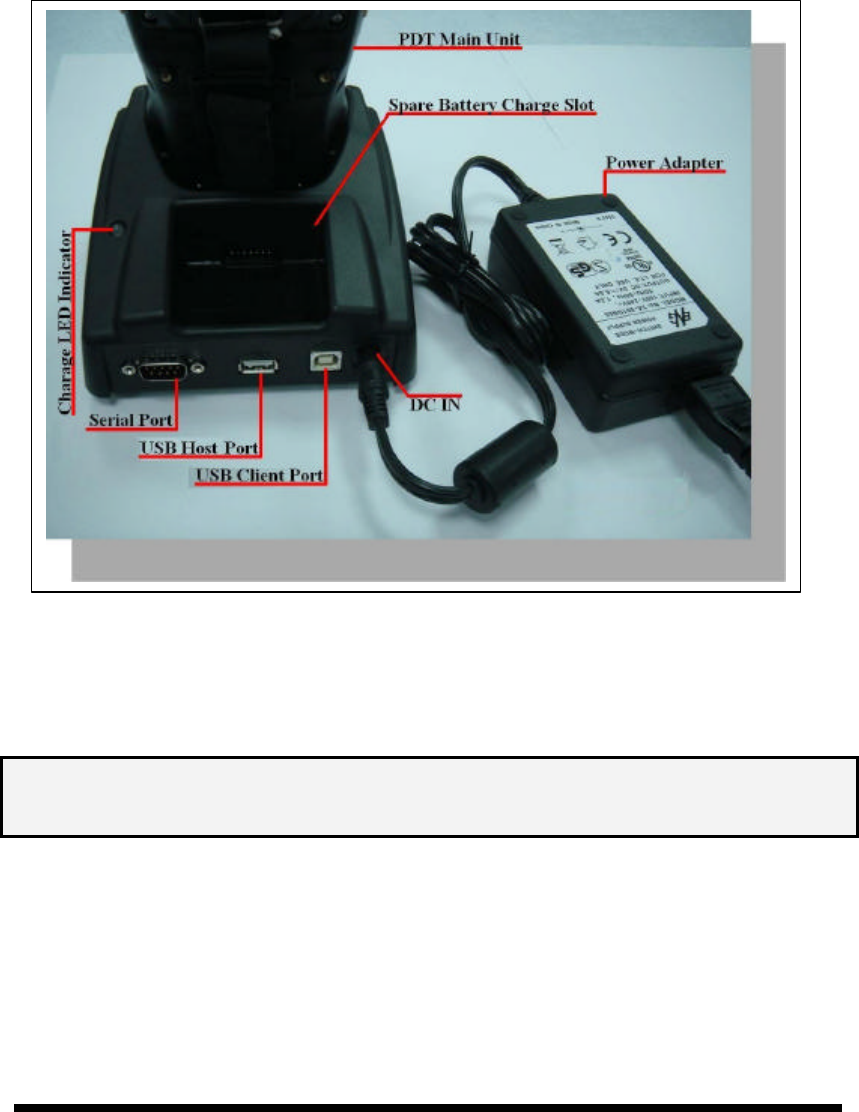
2-10
2.3.3 Charging the battery pack with Single Dock
a) Leave the battery pack inside of the PDT
1. Connect the Power cord to the Power adapter
2. Connect the power cord to a power source
3. Plug in the connector of the power adapter with Single Dock
4. Insert the PDT into the Single Dock
Figure 2-12 Charging with Single Dock
◆ When charging the battery pack, the charge LED indicator on the PDT turns on
Red. After the battery pack is fully charged, the charge LED indicator turns to
Green.
CAUTION: Single Cradle Adapter is 5Vdc/6.5A, which is different from PDT
Adapter (5Vdc/2.6A). Please use the Single Cradle Adapter only.
b) Place the spare battery pack into the Single Cradle’s spare Battery charging slot
1. Connect the power cord to the power adapter
2. Connect the power cord to a power source
3. Plug in the connector of the power adapter with Single Cradle
4. Insert the Battery pack into the Single Cradle’s spare Battery slot.

2-11
◆ When charging the Battery pack in the Single Cradle’s spare Battery slot, the
Single Cradle charging LED will turn on Red. After the Battery pack is fully
charged, this LED will turn to Green.
CAUTION: Please do not remove the Battery pack too long from PDT after you
have already full-charged the Battery pack and backup battery pack and start
to use the PDT. Otherwise the data stored inside SDRAM memory will be lost.
Please also keep in mind power the PDT off if you want to change the main
Battery pack.
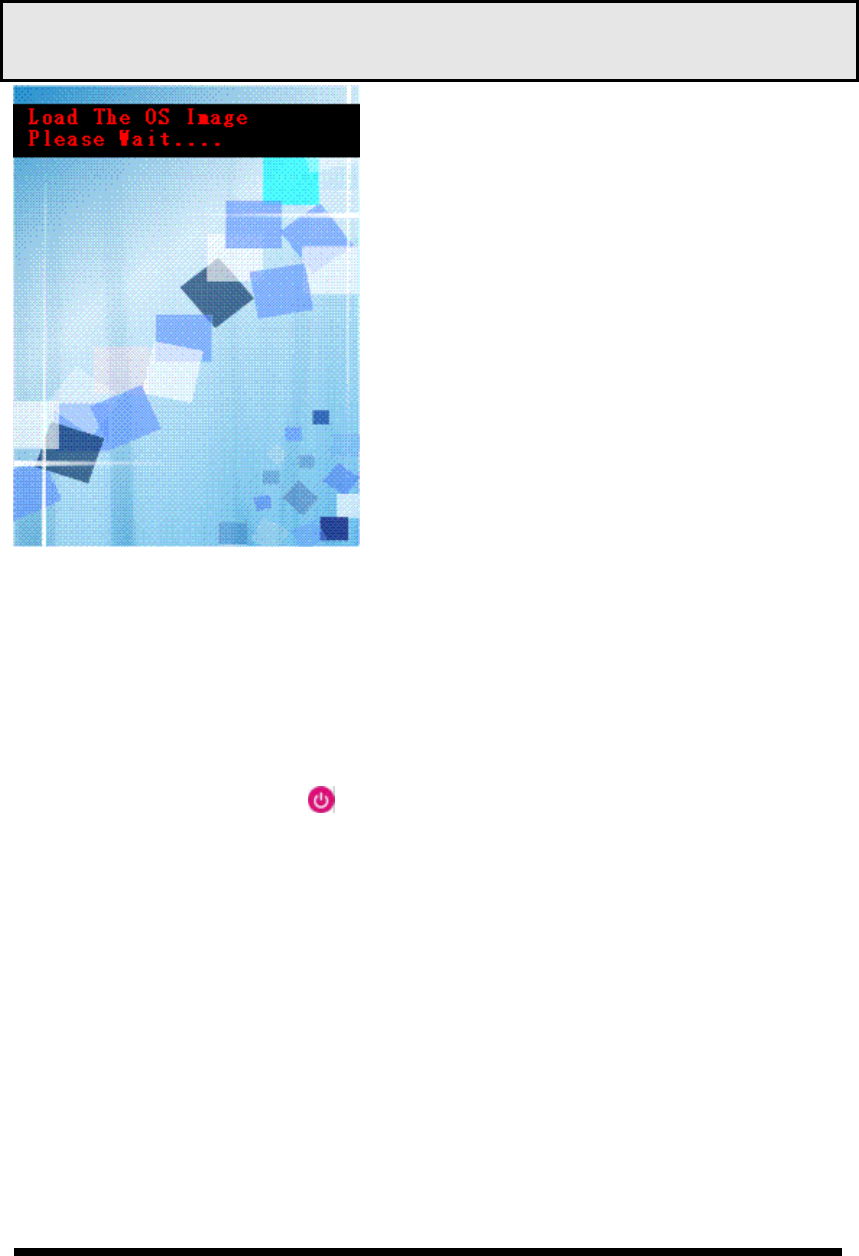
2-12
2.4. Handling the PDT
2.4.1 Starting the PDT
Press the Power key to turn on/off the PDT. If the PDT does not power on, perform a
cold boot. See 2-7 Resetting the PDT.
CAUTION: When a battery is fully inserted in PDT for the first time, upon the
PDT’s first power up, the device boots and powers on automatically.
Figure 2-13 Starting the PDT
2.4.2 Power on / off
Ø To turn on the PDT
Press the Power key briefly (). If the PDT does not power on, perform the cold
reset. See chapter 2.7.1.
As the PDT initializes its file system, it splash screen displays for about 30 seconds
followed by calibration screen. Every time you perform a cold reset, these screens will
also appear.
To turn off the PDT, just press the Power key again. This action does not actually turn off
the PDT, it only turns the PDT into suspend mode. All running applications remain as you
left them, until you press the Power key again to resume operation of the PDT
When the PDT
is powered on for the first time,
it initializes its system. A splash screen (figure
2-13) appears for a short period of time
followed by the Wince.NET 4.2 window.
This section offers the basic procedures of PDT
using.
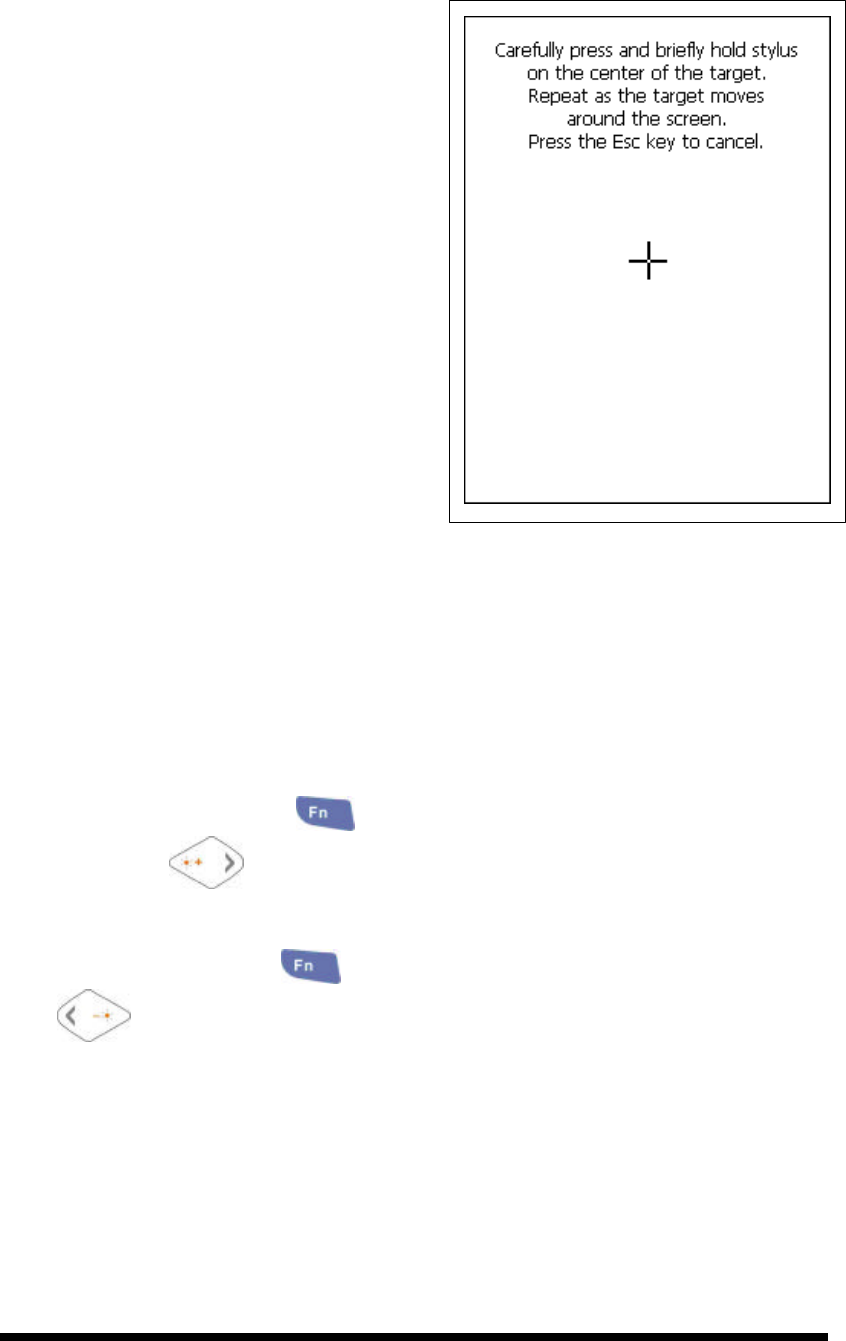
2-13
2.4.3 Calibration of the touch Screen
On the initial boot-up of the PDT, the stylus
calibration screen (Labeled Align Screen)
opens. Use the stylus to press and hold
briefly on the center of each target as it
moves around the screen.
If necessary, adjust the backlight on the PDT
to make the screen readable. (See below
2.4.4. Adjust the brightness).
When you feel the touch screen function is
poor or the operation does not match the
exact location it should be, please recalibrate
the screen by using the stylus to tap the
Start > Settings > Control Panel > Stylus,
to open the “Calibration” to recalibrate
again.
Figure 2-14 Calibration
2.4.4 Adjusting the brightness
The factory default for the brightness is in Middle level. You can adjust the brightness
to meet your environment and comfort as:
1) Become brighter: Press the key and then press on the right key of
Navigation key .
2) Become darker: Press the key and then press on the left key of Navigation
key .
3) The display will become dimmer automatically, if you do not perform any
operation for a specific period of time. This will help to save the battery power. You
can set up the specific period of time to see chapter 2.7 as reference.
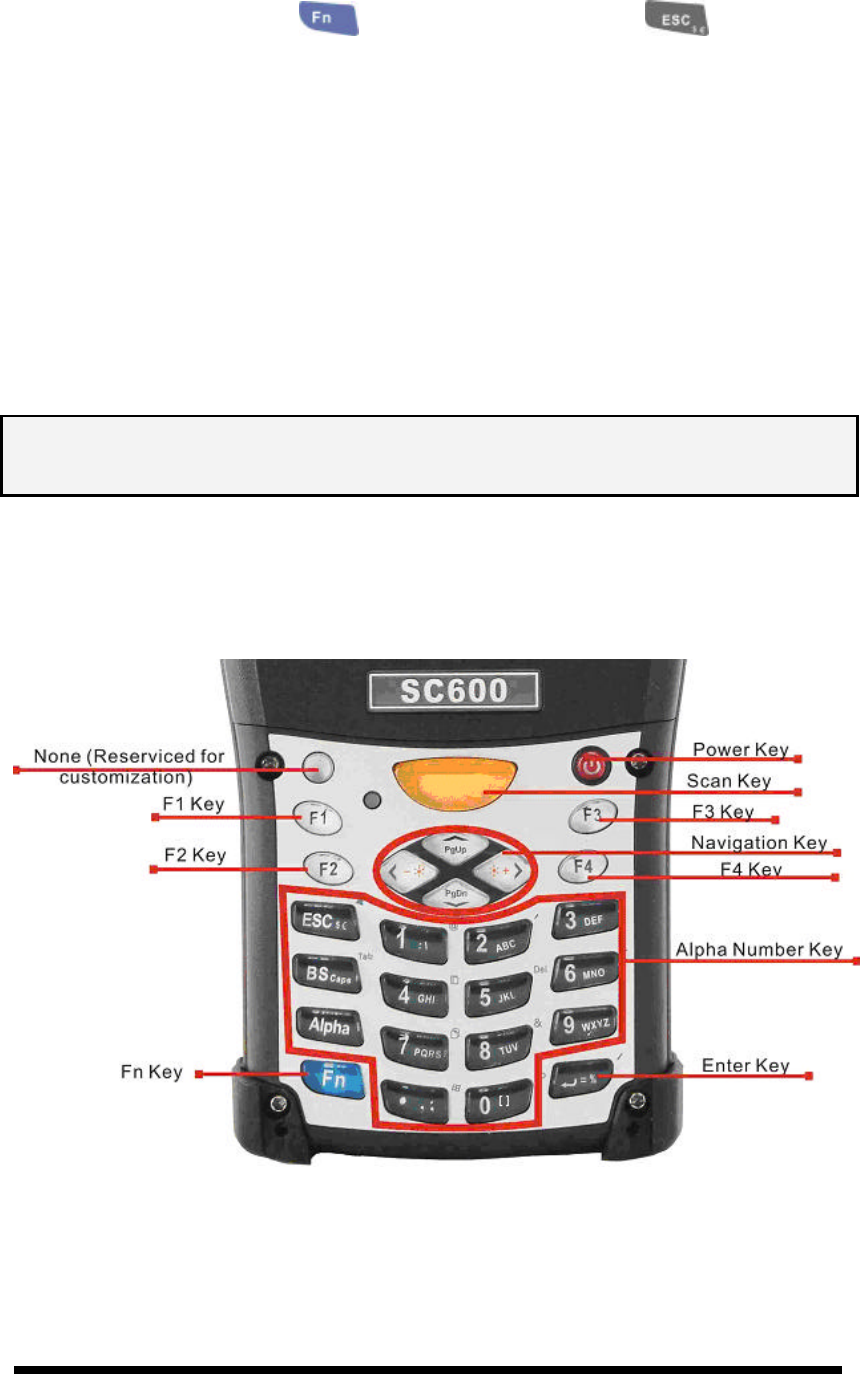
2-14
2.4.5 To mute the Sound
To mute the sound, press the key first, and then press the key to turn
off and on of the sound.
2.4.6 Using the Stylus
The stylus is located next to hand-strap on the left rear of the PDT. The stylus function
is same as the mouse on a PC. Use the stylus to:
1) Navigate the display, select menu item and open optional applications.
2) Tap the characters on soft keyboard panel.
3) Hold the stylus on the screen and drag across the screen to select the list of multiple items.
CAUTION: Never use a pen, pencil, or other sharp object on the display to avoid any
unexpected damage of the touch screen.
2.4.7 Using the SC600 Keypad
Figure 2-15 SC600 Keypad
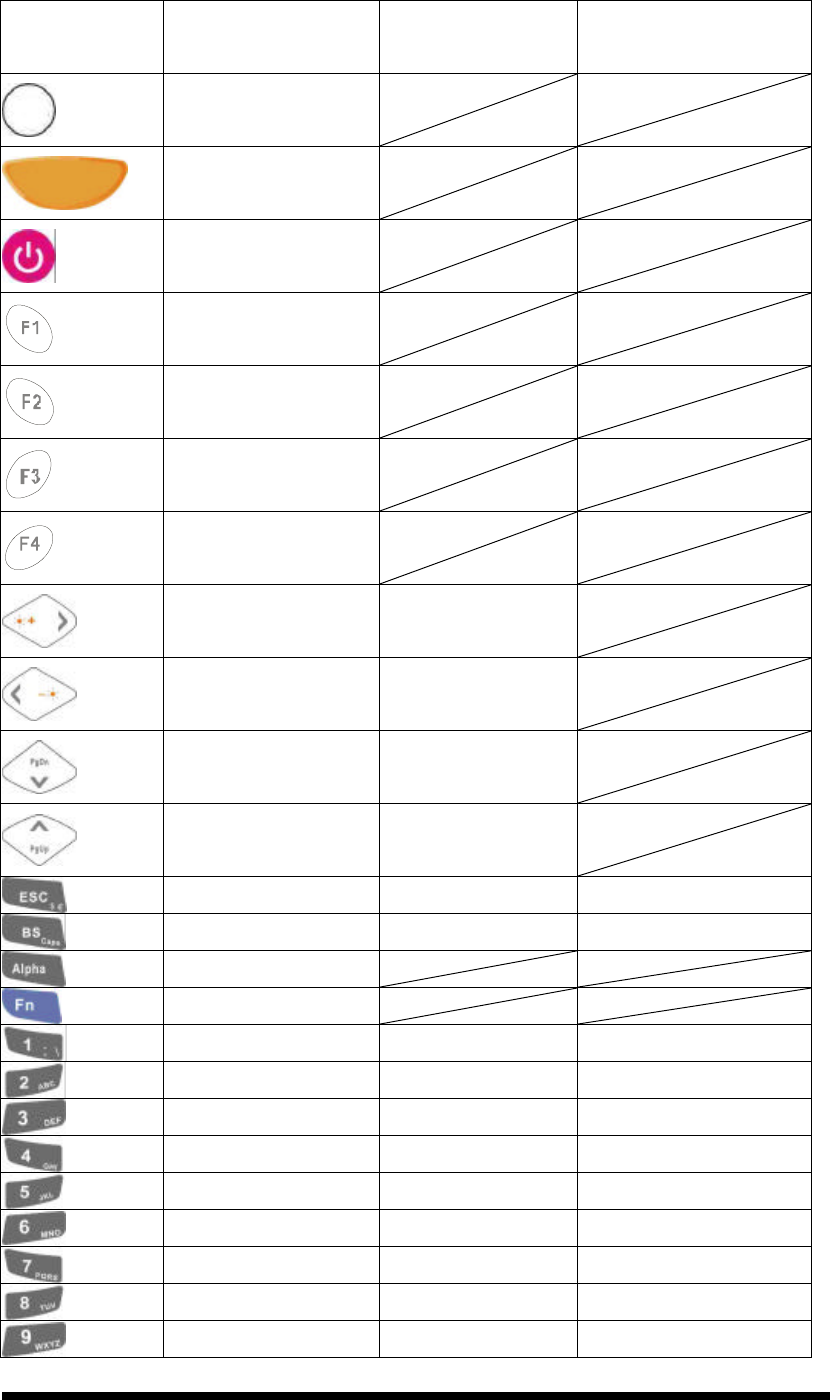
2-15
Table 2-3 Keypad List
Key Main Function Fn + Main
Function
Alpha + Main
Function
None. (Reserved for
Customer)
Main Barcode Scan
Key
Power On/Off
Internet Explorer
Microsoft WordPad
Inbox
File Explorer
Right Backlight
Increase
Left Backlight
Decrease
Down Page Down
Up Page Up
ESC Audio Mute $ €
Backspace TAB Caps
Change to letters
Function change
1 @ :
2 ’ A B C
3 + D E F
4 Paste G H I
5 Del J K L
6 - (Minus Sign) M N O
7 Copy P Q R S
8 & T U V
9 * W X Y Z
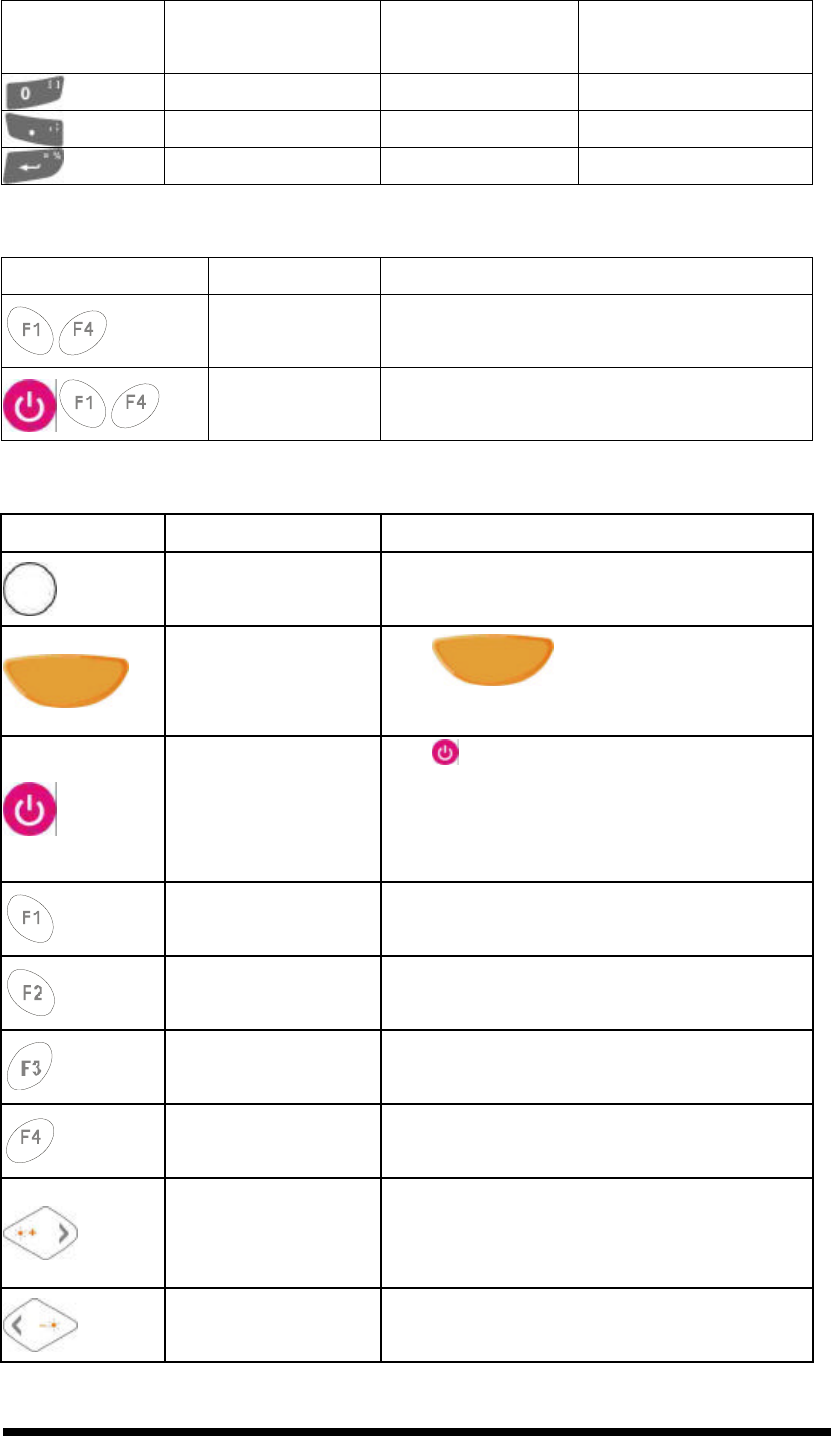
2-16
Key Main Function Fn + Main
Function
Alpha + Main
Function
0 Space 〔 〕
. (Point) Start Menu , ;
Enter = %
Table 2-4 Special Assembler Key
Assembler Key Functionality
Definition
Warm Reset Press “F1” and “F4” button simultaneously.
Cold Reset Press “Power”, “F1” and “F4” button
simultaneously.
Table 2-5 Definition of main Function
Key Main Function Definition
None. Keep its function or by customer demand.
Main Barcode Scan
Key The key activates the scan
function of SC600.
Power On/Off
The key puts the terminal into and
wakes the terminal from suspend mode if
this key button is not pressed more than
two
seconds.
Internet Explorer Application key 1, User can define F1
function from setting.
Microsoft WordPad
Application key 2, User can define F2
function from setting.
Inbox Application key 3, User can define F3
function from setting.
File Explorer Application key 4, User can define F4
function from setting.
Right
Move the cursor one character to the right.
T
he cursor will move continuously if button
is pressed continuously.
Left Move the cursor one character to the left.
The cursor will move continuously if button
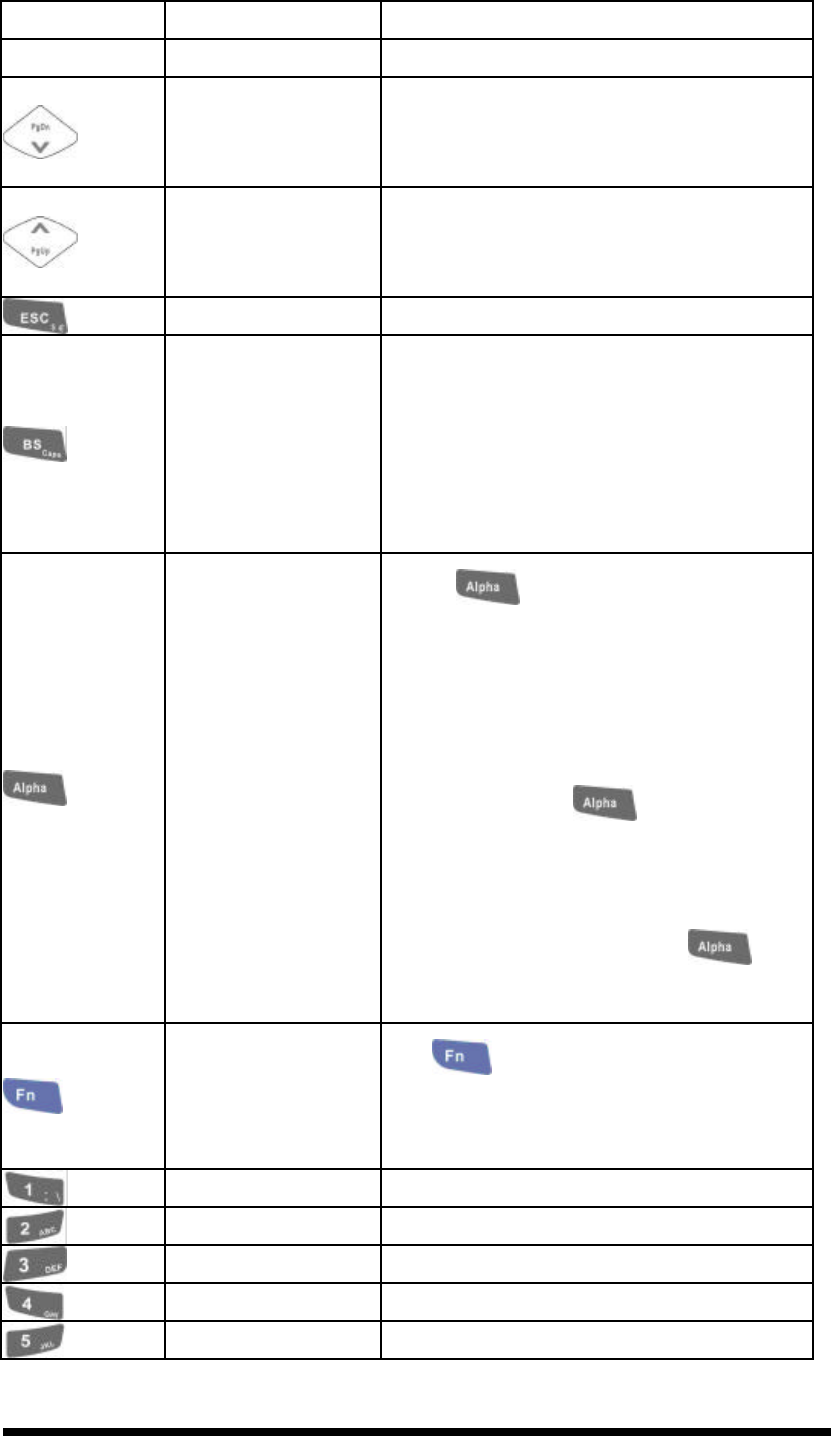
2-17
Key Main Function Definition
is pressed continuously.
Down
Move the cursor down one row or line The
cursor will move continuously if button is
pressed continuously.
Up
Move the cursor up one row or line The
cursor will move continuously if button is
pressed continuously.
ESC This key performs a cancel action
Backspace
“Backspace” key, it moves the cursor back
one space each time the key is pressed. It
deletes the previous character each time it is
pressed if you are typing text. The cursor
will move continuously if button is pressed
continuously.
Change to letters
1. The key enables you to toggle
between the numeric and alpha modes.
Numeric mode is when you type numbers
with number keys. Alpha mode is when you
type letters with the number keys.
2. When you press key, it appears
“Alpha” icon at the Task bar to indicate
Alpha mode is enabled. The keypad stays in
the alpha mode until you press key
again.
Function change
The
key is used in combination with
other keys to type special characters and
perform system functions.
1 Number key “1”
2 Number key “2”
3 Number key “3”
4 Number key “4”
5 Number key “5”
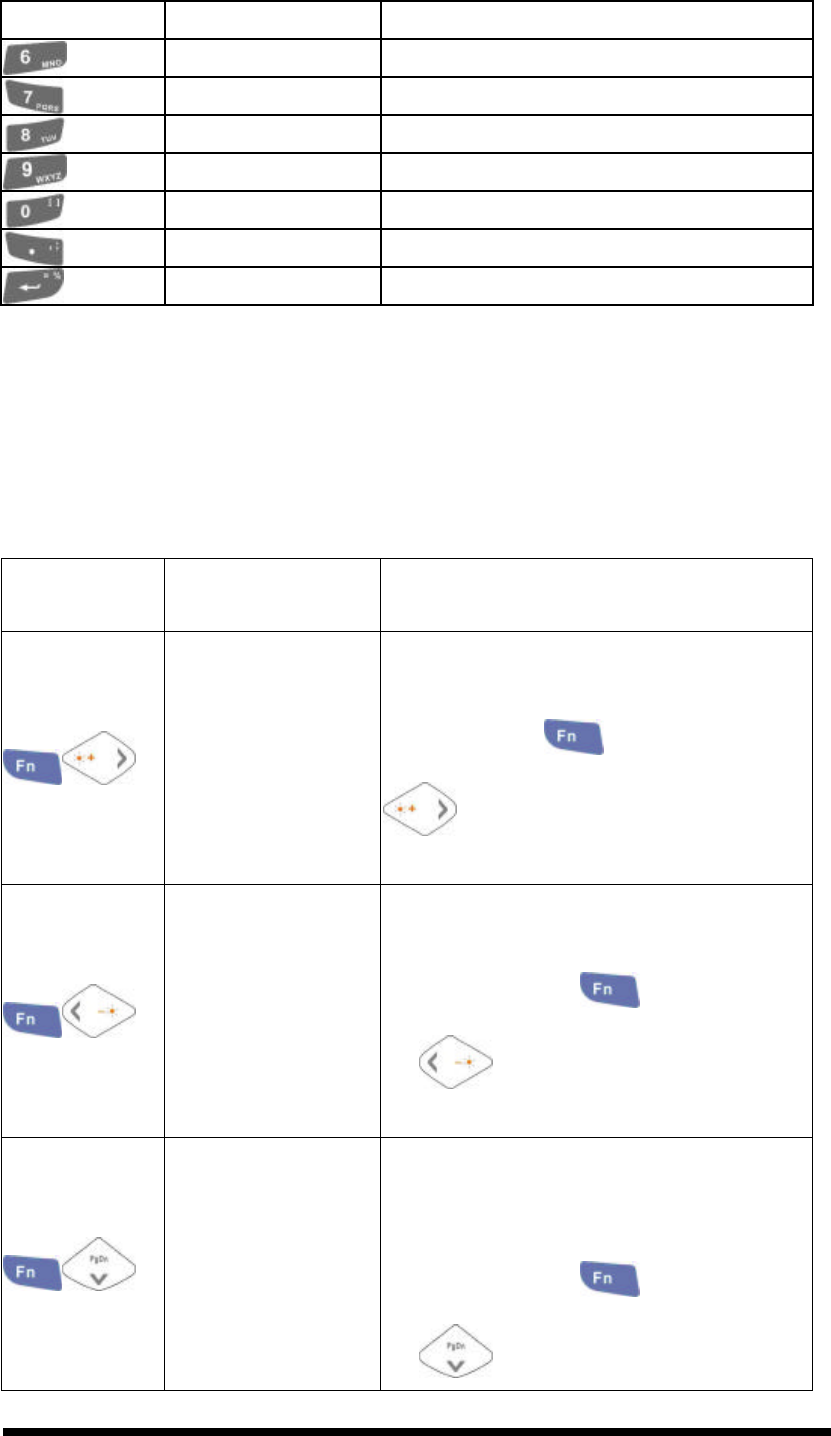
2-18
Key Main Function Definition
6 Number key “6”
7 Number key “7”
8 Number key “8”
9 Number key “9”
0 Number key “0”
. Point key
Enter This key confirms data entry
2.4.7.1 Special Function by “Fn” + main Function
The “Fn” key is used in combination with other keys to type special characters and
perform system functions.
Table 2-6 Special Function key define
Key
Sequence
Fn + Main
Function Definition
Increase of
Brightness
Increase the LED backlight brightness of
display screen(Lighter)
You must press key, then press
key to increase backlight
brightness each time.
Decrease of
Brightness
1. Decrease the LED backlight brightness
of display screen (darker)
2. You must press key, then press
key to decrease backlight
brightness each time.
Page Down
1. Move the cursor down one page. The
cursor will move continuously if button
is pressed continuously.
2. You must press key, then press
key to cursor down one page
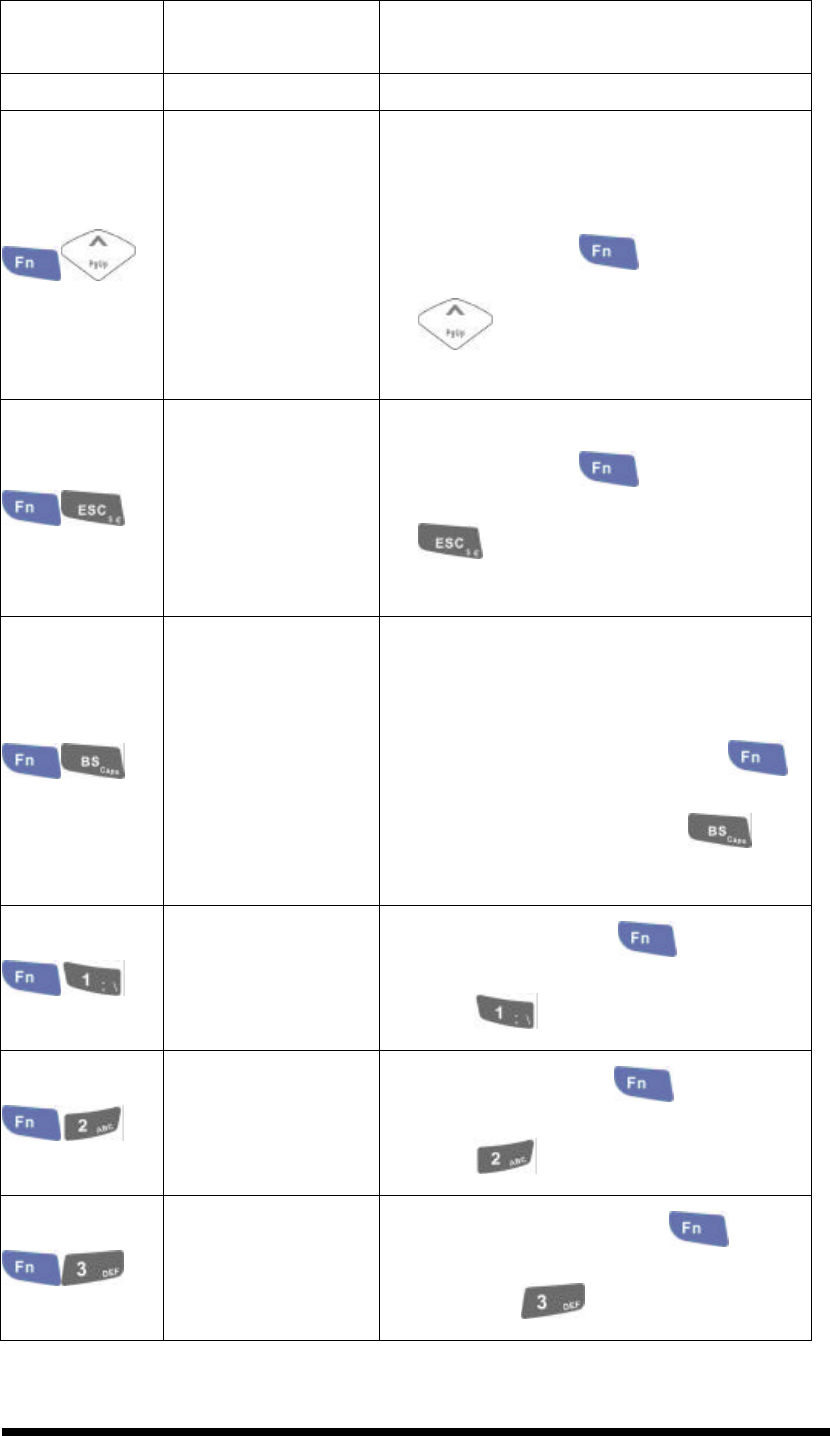
2-19
Key
Sequence
Fn + Main
Function Definition
each time.
Page Up
1. Move the cursor up one page. The
cursor will move continuously if button
is pressed continuously.
2. You must press key, then press
key to cursor up one page each
time.
Audio Mute
1. Toggle the audio mute/on
2. You must press key, then press
key to enable audio mute or turn
on audio function each time.
TAB
1. The “TAB” function is to move the
cursor to the next tab stop or the next
control (on a form)
2. To do this function by pressing
key first, and then pressing key
each time.
@
Enter an @ by pressing key, then
pressing key.
’
Enter a {’} by pressing key, then
pressing key.
+ Enter a plus sign by pressing key,
then pressing key
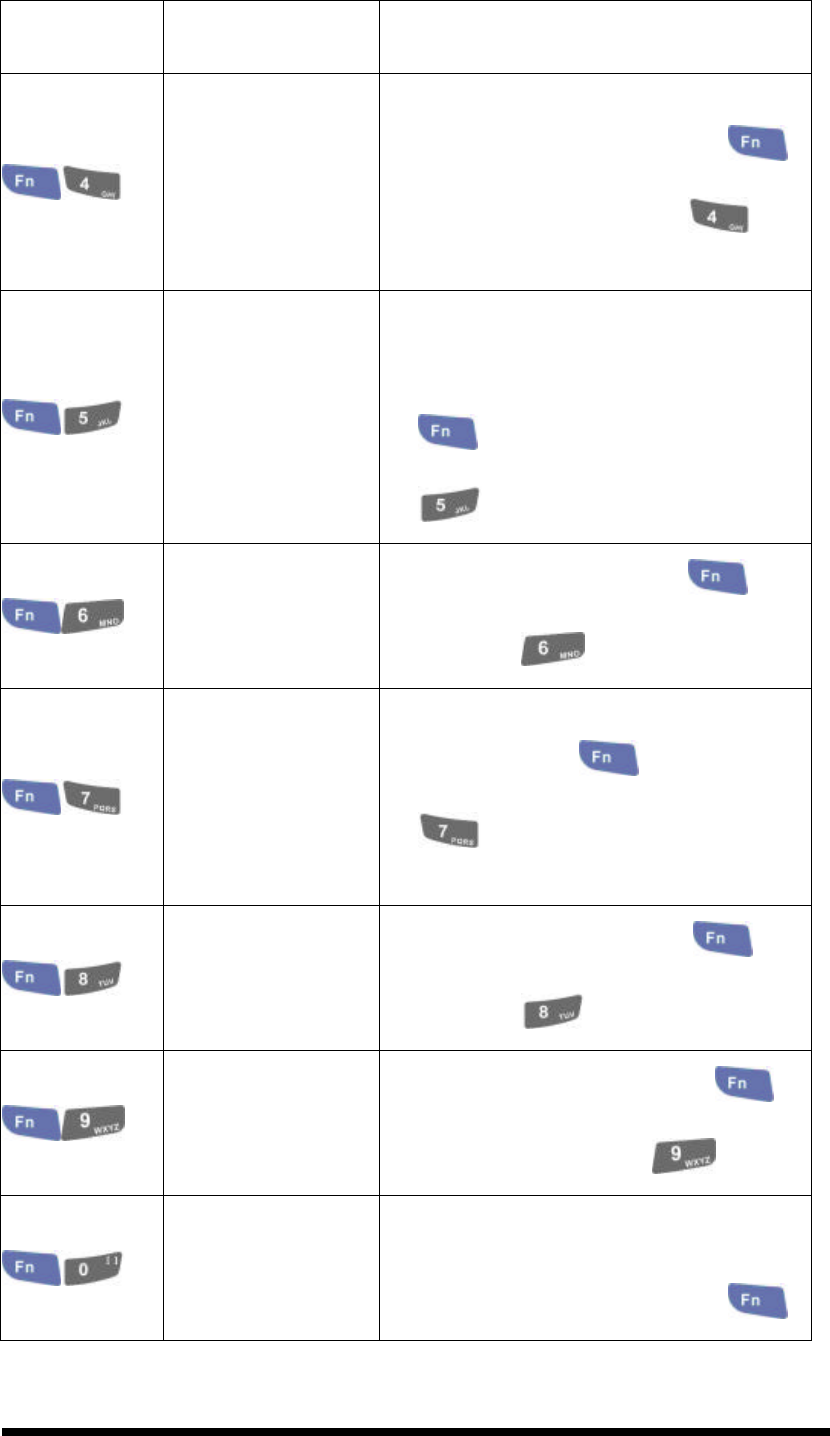
2-20
Key
Sequence
Fn + Main
Function Definition
Paste
1. It is to do “Paste” function.
2. To do this function by pressing
key first, and then pressing key
each time.
Del
1. The “Delete” function delete the next
character forward each time.
2. To do “Delete” function by pressing
key first, and then pressing
key each time.
- (Minus Sign) Enter a minus sign by pressing key,
then pressing key.
Copy
1. Copy action.
2. You must press key, then press
key to do “Copy” action each
time.
& Enter an AND sign by pressing key,
then pressing key.
* Enter an asterisk sign by pressing
key first, and then pressing key.
Space
1. The “Space” function is to move the
cursor one space.
2. To do this function by pressing
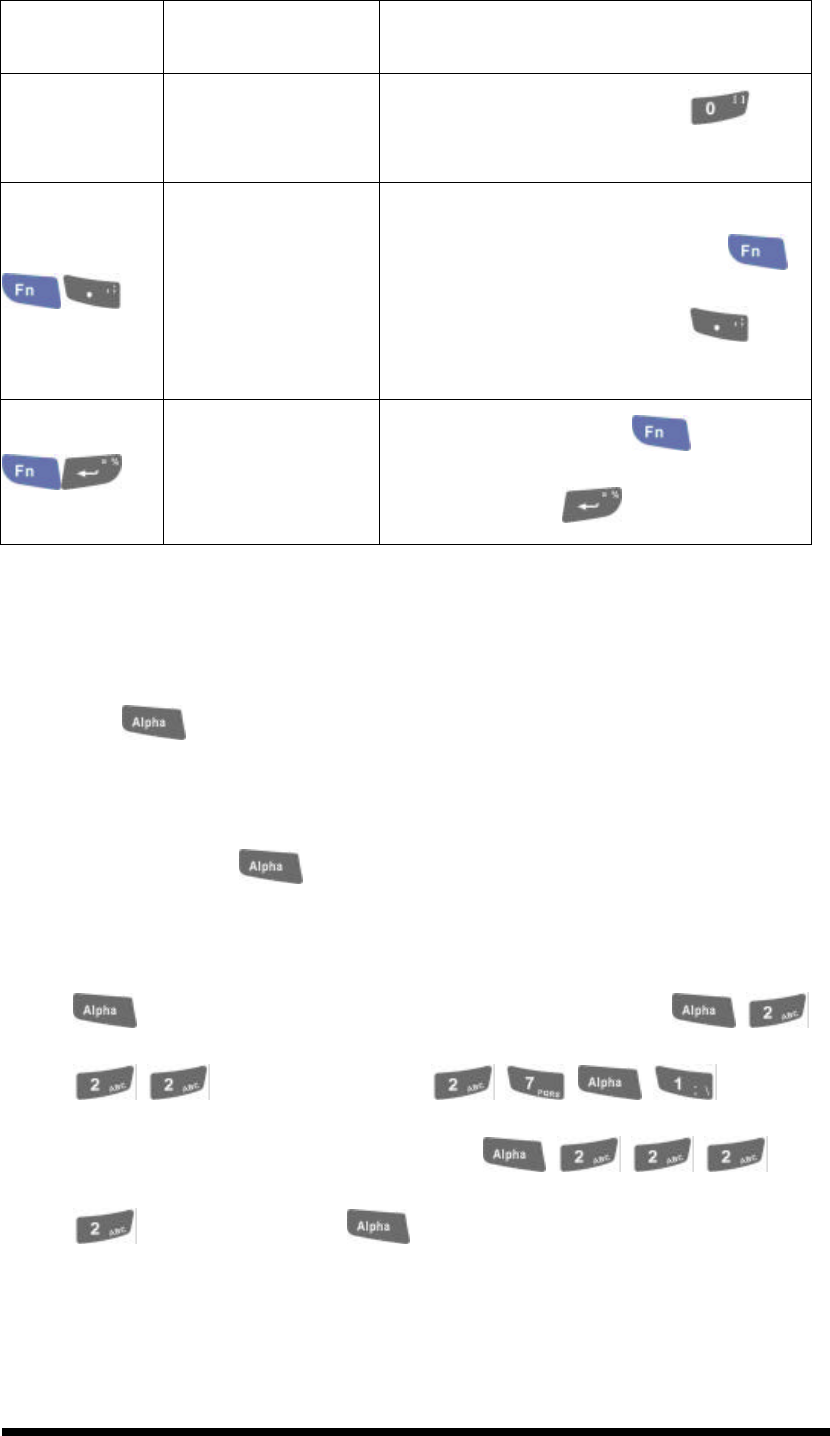
2-21
Key
Sequence
Fn + Main
Function Definition
key first, and then pressing key
each time.
Start Menu
1. It displays the Start menu.
2. To do this function by pressing
key first, and then pressing key
each time.
Enter a slash by pressing key first,
and then pressing key.
2.4.7.2 Alpha plane keys by “Alpha” + main Function
1. The key enables you to toggle between the numeric and alpha modes.
Numeric mode is when you type numbers with number keys. Alpha mode is
when you type letters with the number keys.
2. When you press key, it appears “Alpha” icon at the Task bar to
indicate Alpha mode is enabled. It means Alpha mode is disabled if there isn’t
“Alpha” icon at Task bar. The keypad stays in the alpha mode until you press
key again. For an example to type “cap1” word, press
< wait 0.5 seconds > .
3. If you want to type a lowercase “c”, press (The
key three times, the key is needed if it’s the first alpha
character keying in.). If a letter that is on the same key as the last letter entered,
wait two seconds after you pressed the last key, then you can enter the correct
series of keystrokes to create the next letter.
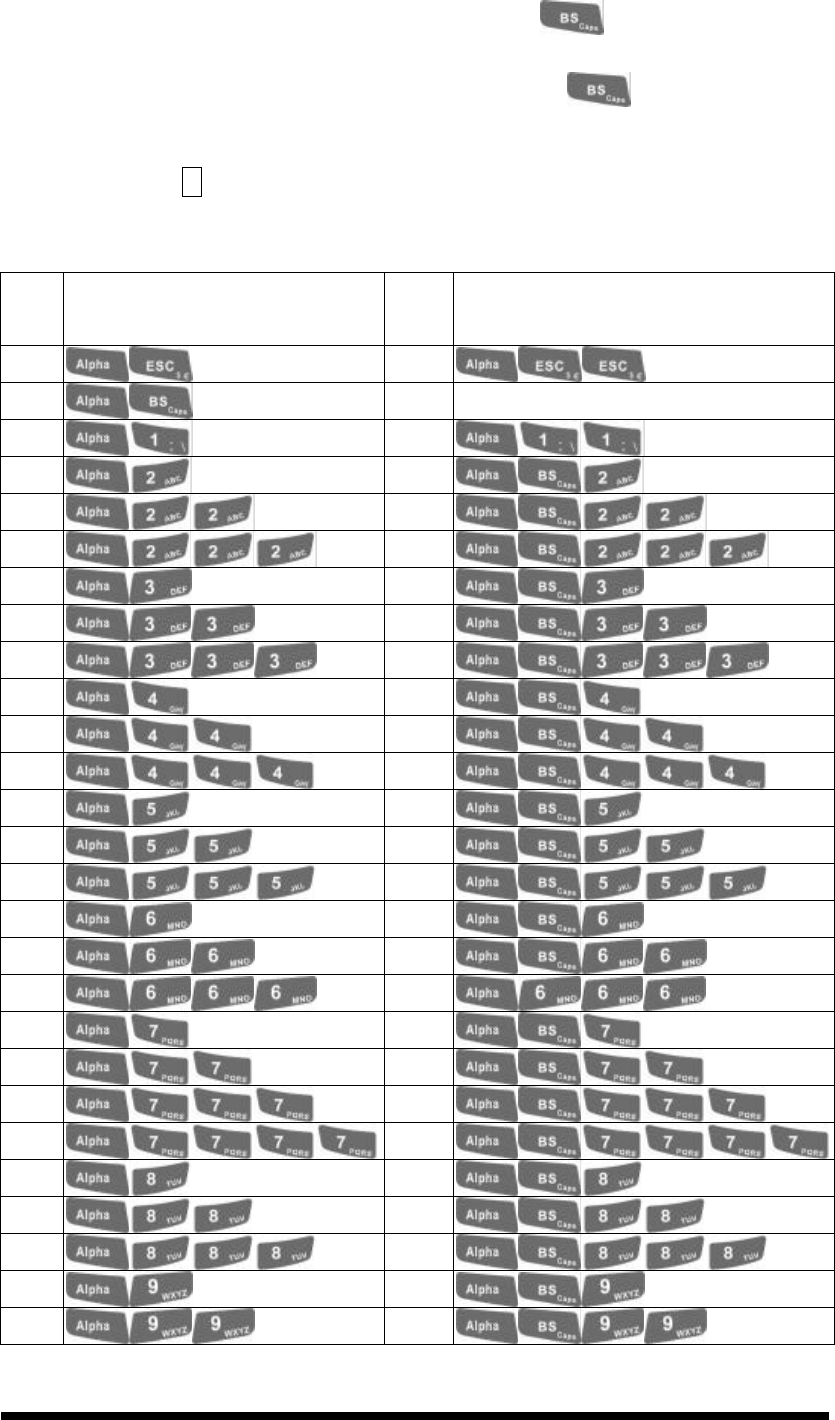
2-22
4. While you are in the Alpha mode and you press key to initial the Caps
mode, you will render a Caps Lock until you press key again. Once
you are in Caps mode, you stay in Caps until it is pressed again.
5. It appears “A” icon at Task Bar during Caps mode.
Table 2-7 Alpha + Numeric keys define
To
enter
Press the Keys To
enter
Press the Keys
$ €
Caps
:
a A
b B
c C
d D
e E
f F
g G
h H
i I
j J
k K
l L
m M
n N
o O
p P
q Q
r R
s
S
t T
u U
v V
w W
x X
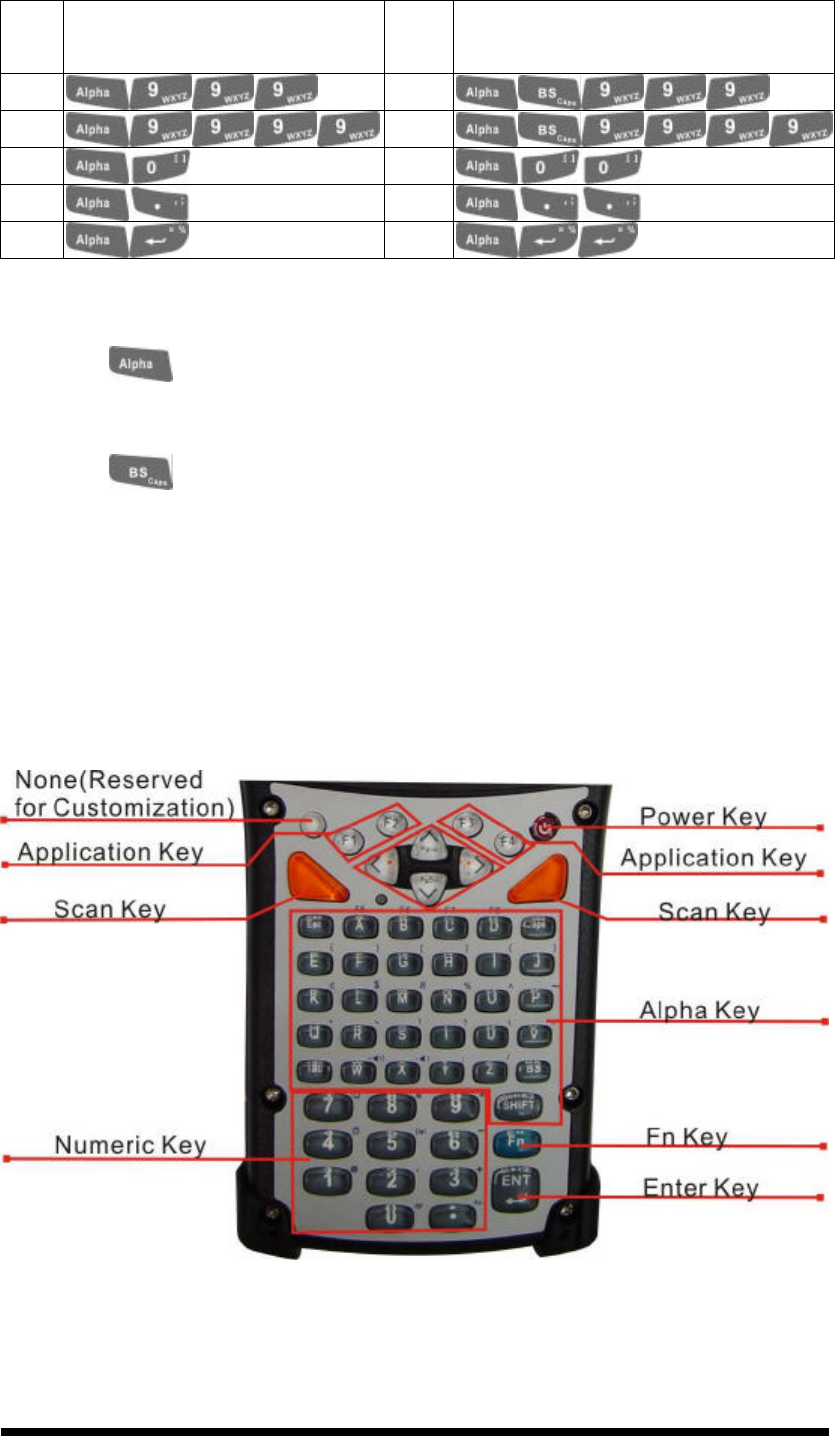
2-23
To
enter
Press the Keys To
enter
Press the Keys
y Y
z
Z
〔 〕
, ;
= %
Note:
1. The key is not needed to key in if the character isn’t the first alpha
character being keyed in.
2. The keys are not needed to key in if it is not the first capital alpha
character being keyed in.
2.4.8 Using the SC620 Keypad
Figure 2-16 SC620 Keypad
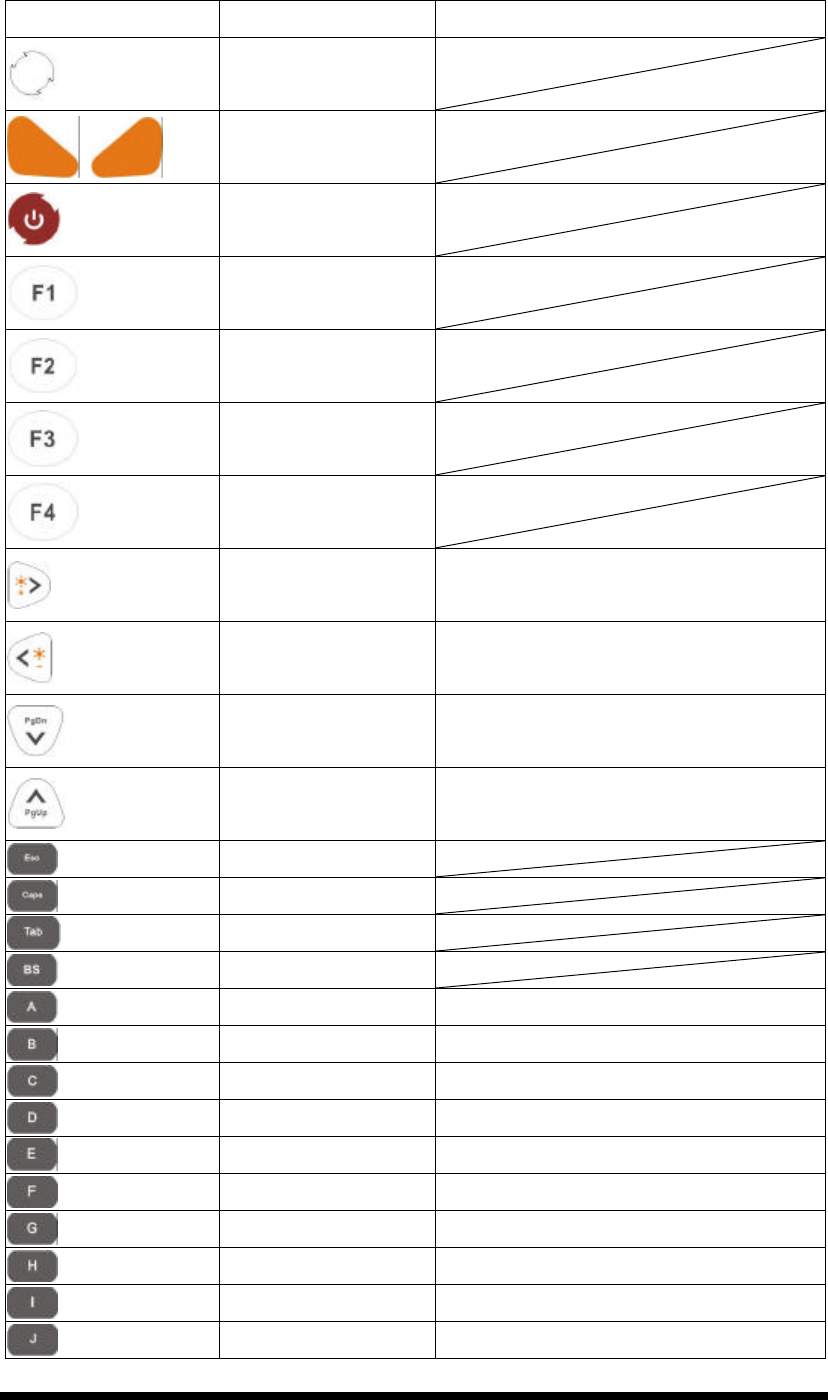
2-24
Table 2-8 Keypad List
Key Main Function Fn + Main Function
None
Main Barcode Scan
Key
Power On/Off
Internet Explorer
Microsoft WordPad
Inbox
File Explorer
Right Increase of Brightness
Left Decrease of Brightness
Down Page Down
Up Page Up
Esc
Caps
Tab
Backspace
A F5
B F6
C F7
D F8
E (
F )
G [
H ]
I {
J }
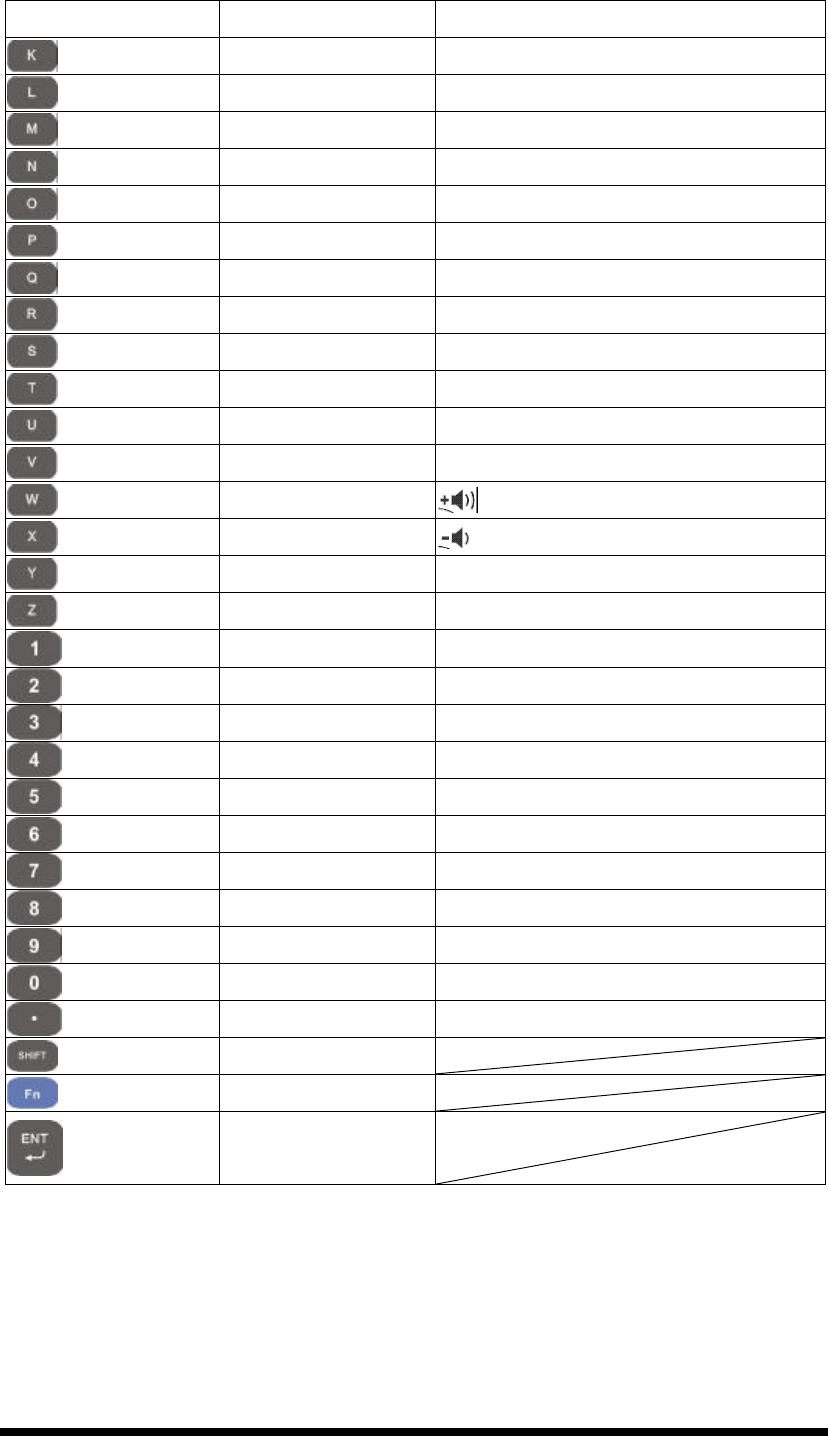
2-25
Key Main Function Fn + Main Function
K €
L $
M #
N %
O ^
P ~
Q ,
R 、
S !
T ?
U \
V =
W
X
Y ;
Z /
1 @
2 ’
3 +
4 Paste
5 Del
6 - (Minus Sign)
7 Copy
8 &
9 *
0 Start Menu
. (Point) Space
SHIFT
Function change
Enter
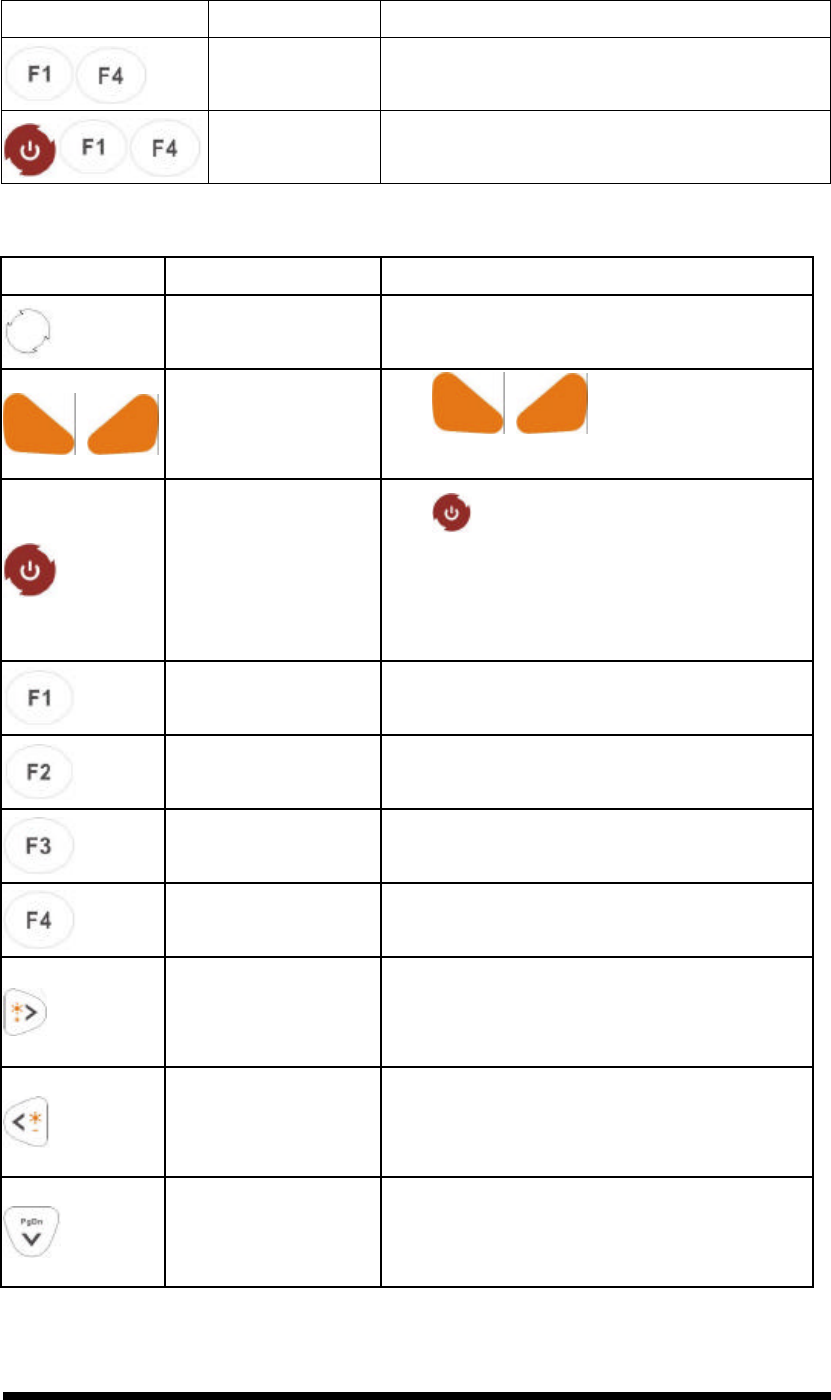
2-26
Table 2-9 Special Assembler Key
Assembler Key Functionality
Definition
Warm Reset Press “F1” and “F4” button simultaneously.
Cold Reset Press “Power”, “F1” and “F4” button
simultaneously.
Table 2-10 Definition of main Function
Key Main Function Definition
None Keep its function by customer demand.
Main Barcode Scan
Key The
key activates the scan
function of SC620.
Power On/Off
The key puts the terminal into and
wakes the terminal from suspend mode if
this key button is not pressed more than
two
seconds.
Internet Explorer Application key 1, User can define F1
function from setting.
Microsoft WordPad
Application key 2, User can define F2
function from setting.
Inbox Application key 3, User can define F3
function from setting.
File Explorer Application key 4, User can define F4
function from setting.
Right
Move the cursor one character to the right.
The cursor will move continuously if button
is pressed continuously.
Left
Move the cursor one character to the left.
The cursor will move continuously if button
is pressed continuously.
Down
Move the cursor down one row or line The
cursor will move continuously if button is
pressed continuously.
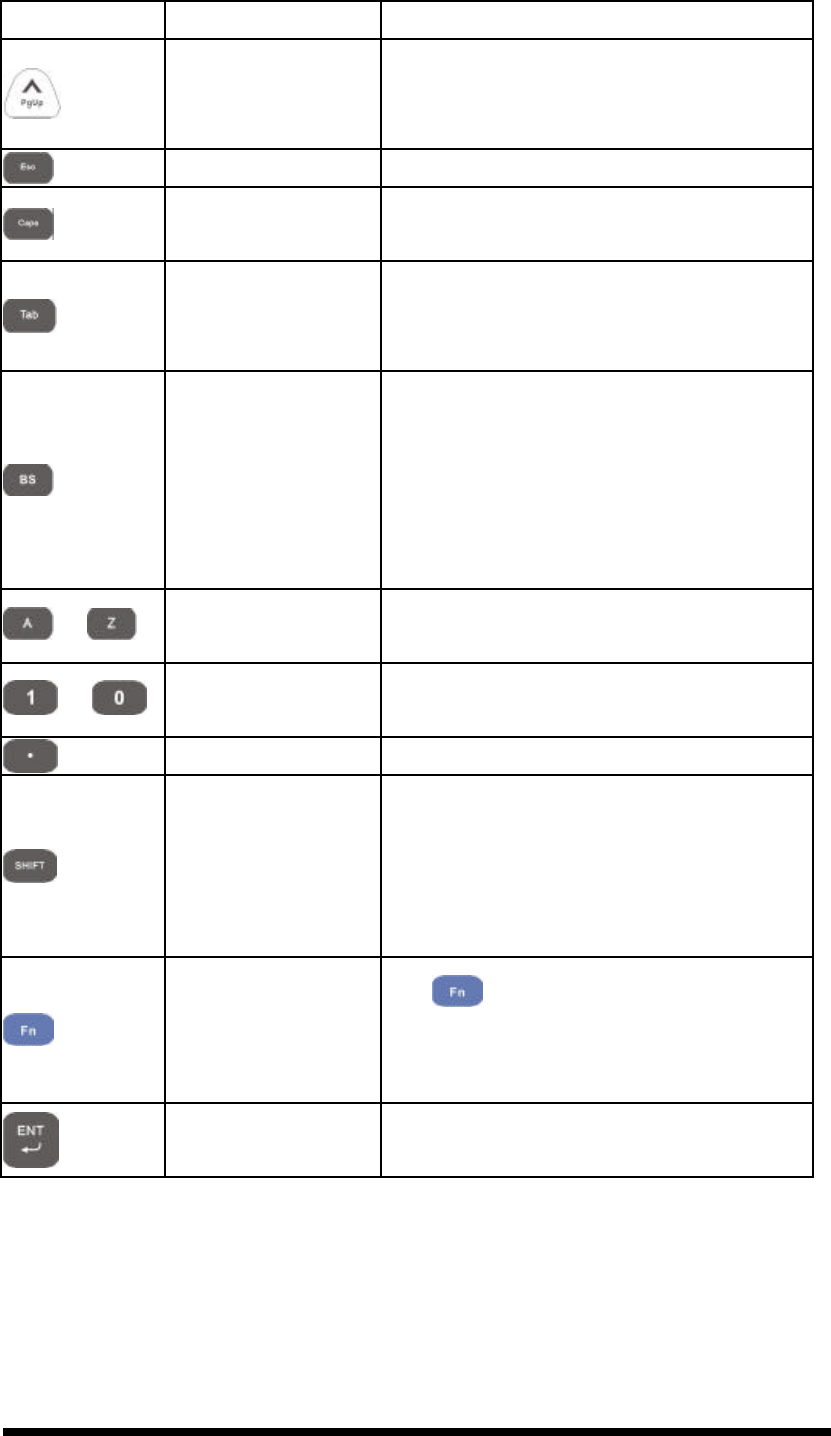
2-27
Key Main Function Definition
Up
Move the cursor up one row or line The
cursor will move continuously if button is
pressed continuously.
Esc This key performs a cancel action
Caps Conversion of the capital & lower case of
the alpha key.
Tab
The “TAB” function is to move the cursor
to the next tab stop or the next control (on a
form)
Backspace
“Backspace” key, it moves the cursor back
one space each time the key is pressed. It
deletes the previous character each time it is
pressed if you are typing text. The cursor
will move continuously if button is pressed
continuously.
~ A ~ Z Use the alpha keys for alphabetic
characters.
~ 1 ~ 0 Numeric value keys.
. Point key
SHIFT
Press and release the SHIFT key to activate
the keypad alternate SHIFT functions. The
icon appears on the taskbar. Press and
release the SHIFT key again to return to the
normal keypad functions.
Function change
The key is used in combination with
other keys to type special characters and
perform system functions.
Enter This key confirms data entry
2.4.8.1 Special Function by “Fn” + main Function
The “Fn” key is used in combination with other keys to type special characters and
perform system functions.
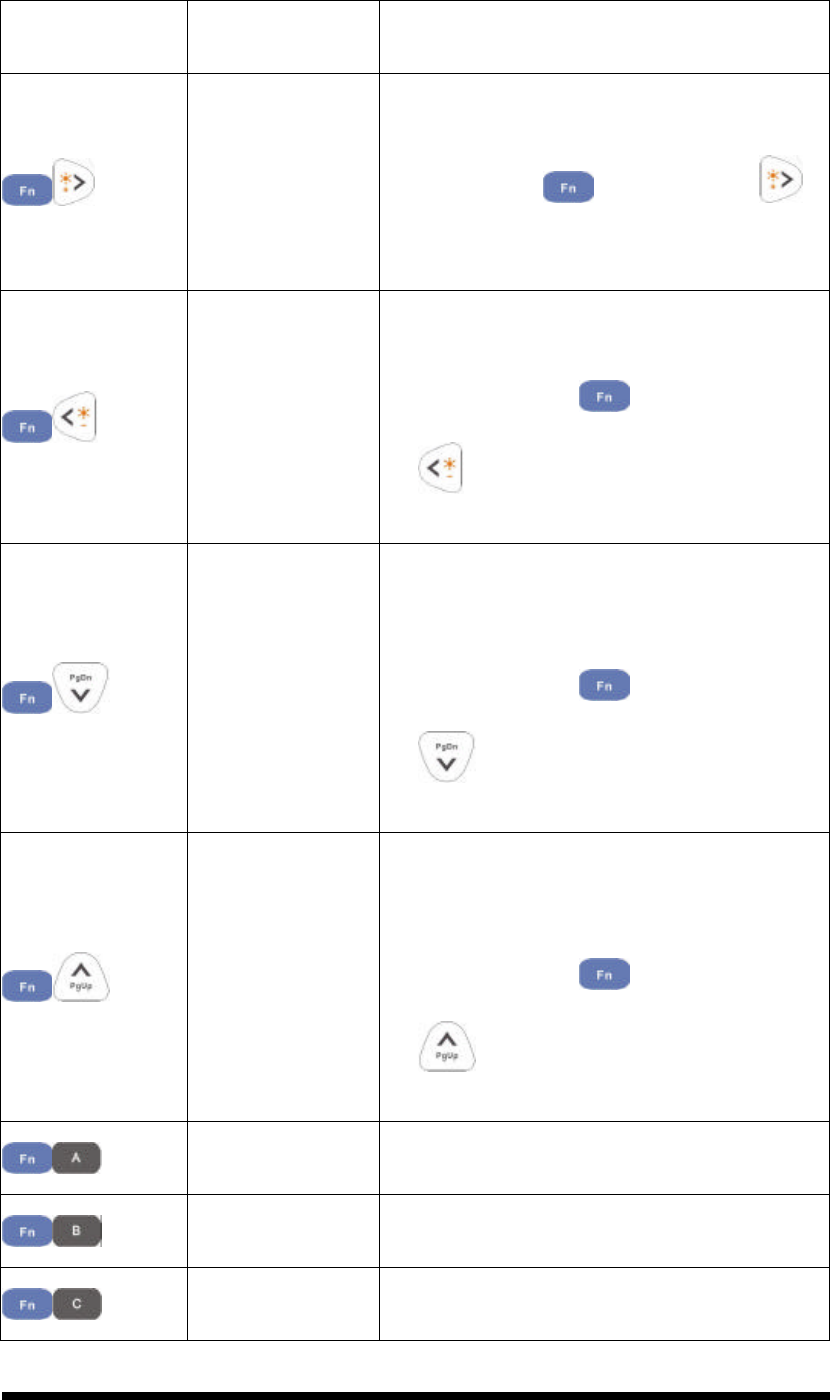
2-28
Table 2-11 Special Function key define
Key Sequence
Fn + Main
Function Definition
Increase of
Brightness
Increase the LED backlight brightness of
display screen(Lighter)
You must press key, then press
key to increase backlight brightness each
time.
Decrease of
Brightness
3. Decrease the LED backlight brightness of
display screen (darker)
4. You must press key, then press
key to decrease backlight brightness
each time.
Page Down
3. Move the cursor down one page. The
cursor will move continuously if button is
pressed continuously.
4. You must press key, then press
key to cursor down one page each
time.
Page Up
3. Move the cursor up one page. The cursor
will move continuously if button is
pressed continuously.
4. You must press key, then press
key to cursor up one page each
time.
F5 (Barcode
Settings)
Application key 5, User can define F5
function from setting.
F6 (Media Player)
Application key 6, User can define F6
function from setting.
F7 (Calculator) Application key 7, User can define F7
function from setting.
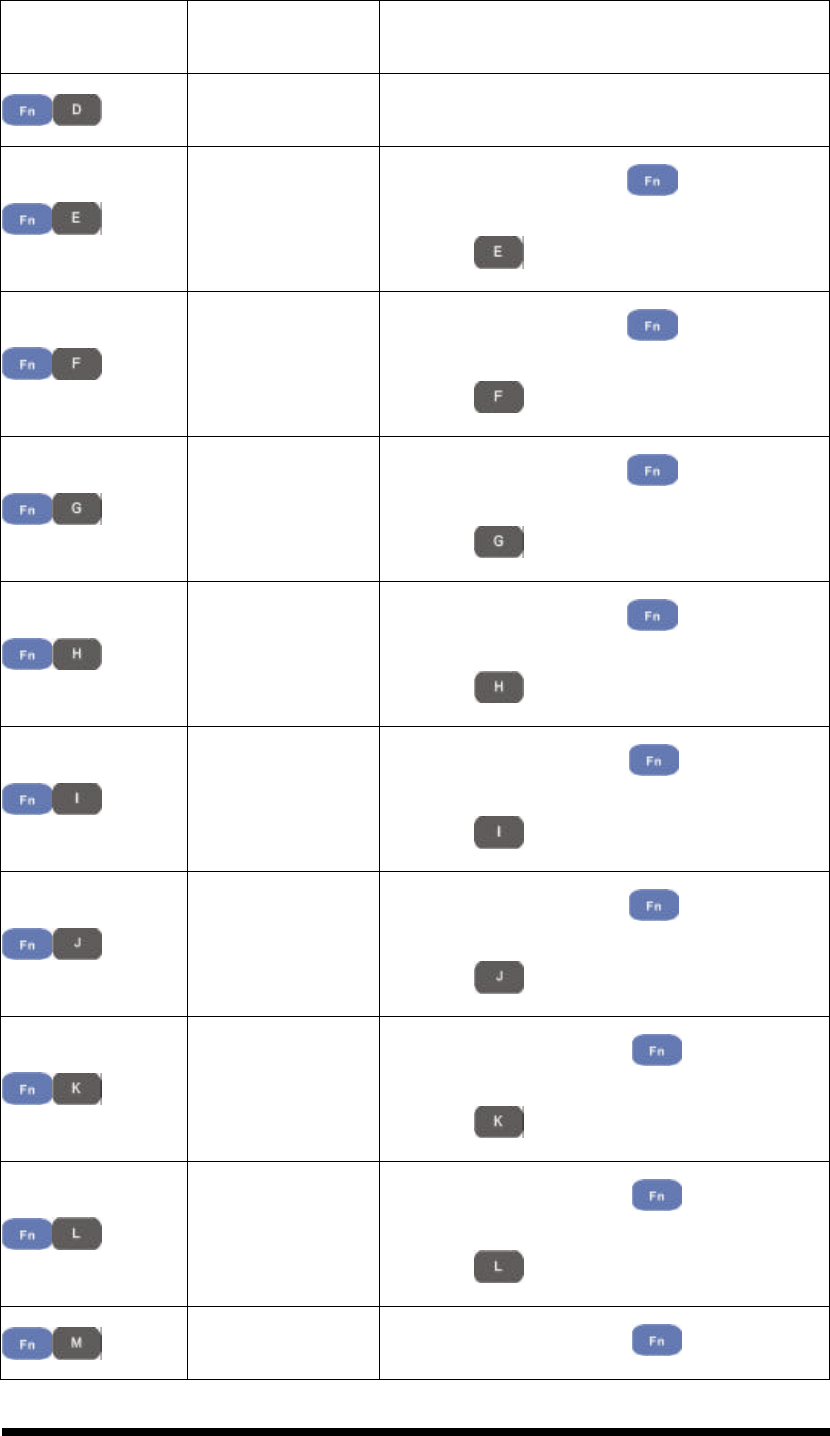
2-29
Key Sequence
Fn + Main
Function Definition
F8 (Information) Application key 8, User can define F8
function from setting.
(
Enter a ( by pressing key, then
pressing key.
)
Enter a ) by pressing key, then
pressing key.
[
Enter a [ by pressing key, then
pressing key.
]
Enter a ] by pressing key, then
pressing key.
{
Enter a { by pressing key, then
pressing key.
}
Enter a } by pressing key, then
pressing key.
€
Enter a € by pressing key, then
pressing key.
$
Enter a $ by pressing key, then
pressing key.
# Enter a # by pressing key, then
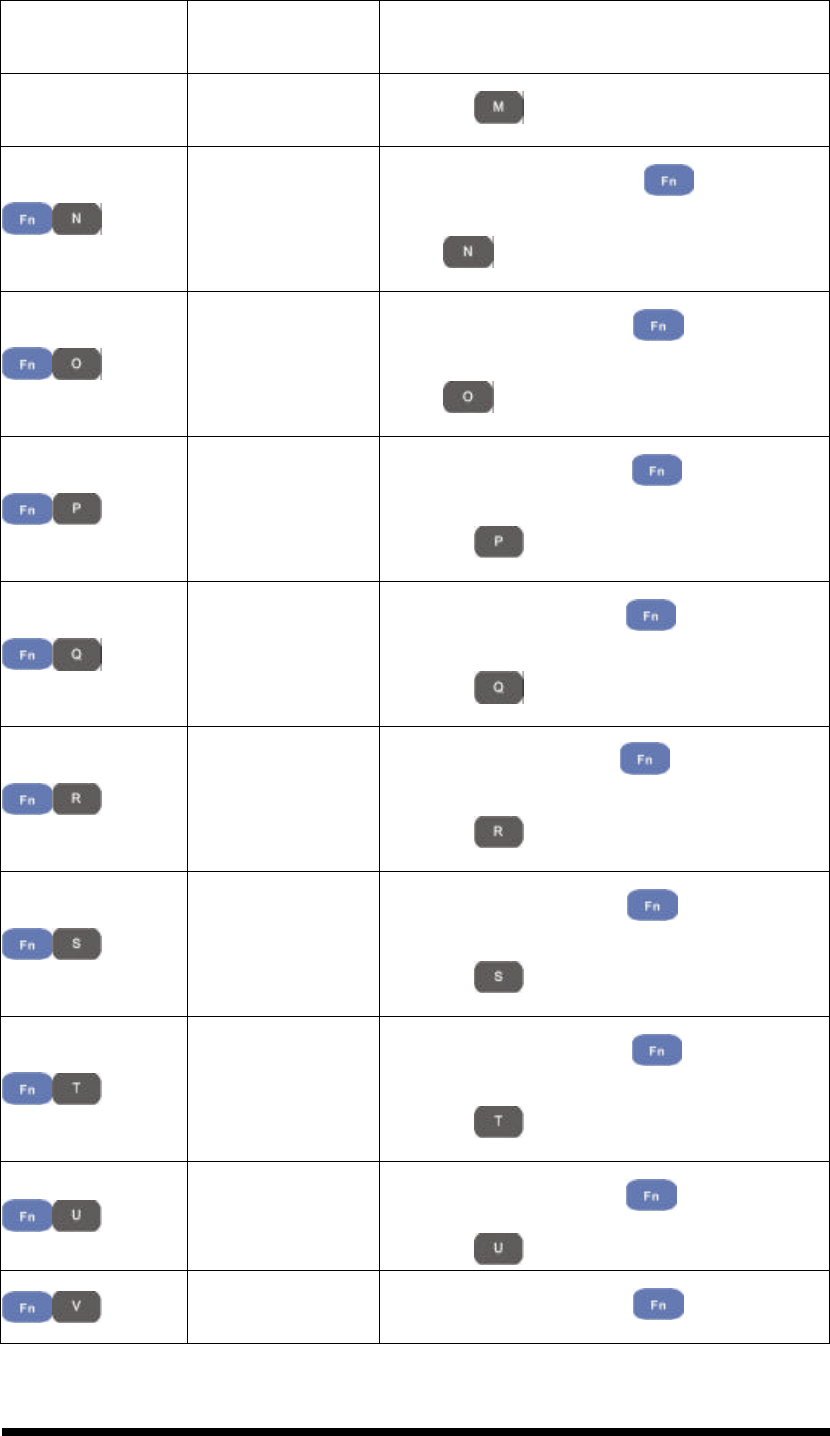
2-30
Key Sequence
Fn + Main
Function Definition
pressing key.
%
Enter a % by pressing key, then
press key.
^
Enter a ^ by pressing key, then
press key.
~
Enter a ~ by pressing key, then
pressing key.
,
Enter a , by pressing key, then
pressing key.
、
Enter a 、 by pressing key, then
pressing key.
!
Enter a ! by pressing key, then
pressing key.
?
Enter a ? by pressing key, then
pressing key.
\ Enter a \ by pressing key, then
pressing key.
= Enter a = by pressing key, then
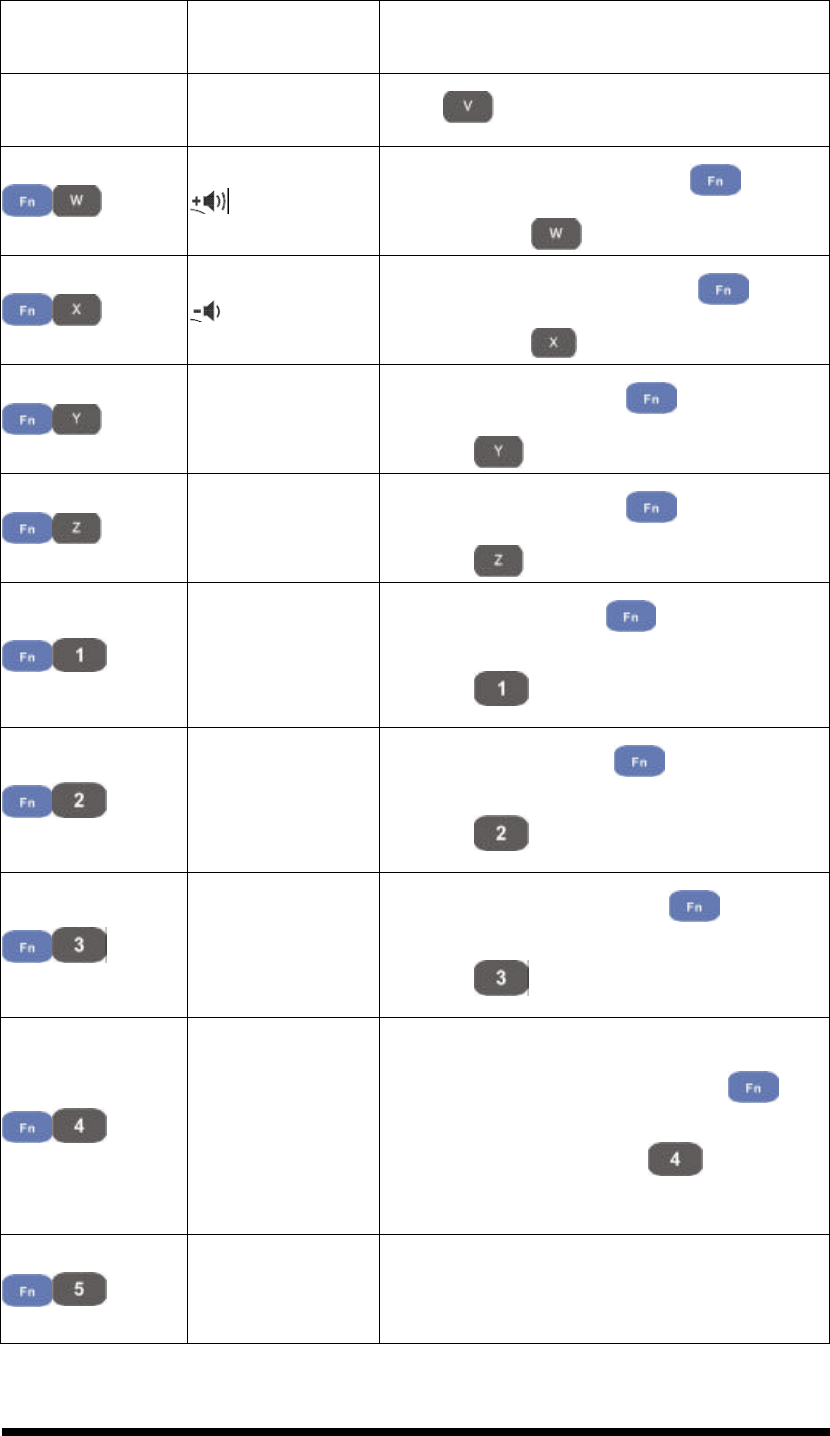
2-31
Key Sequence
Fn + Main
Function Definition
press key.
Increases device volume, press key
and then press key.
Decreases device volume, press key
and then press key.
; Enter a ; by pressing key, then
pressing key.
/ Enter a / by pressing key, then
pressing key.
@
Enter a @ by pressing key, then
pressing key.
’
Enter a {’} by pressing key, then
pressing key.
+
Enter a plus sign by pressing key, then
pressing key
Paste
3. It is to do “Paste” function.
4. To do this function by pressing
key
first, and then pressing key each
time.
Del
3. The “Delete” function delete the next
character forward each time.
4. To do “Delete” function by pressing
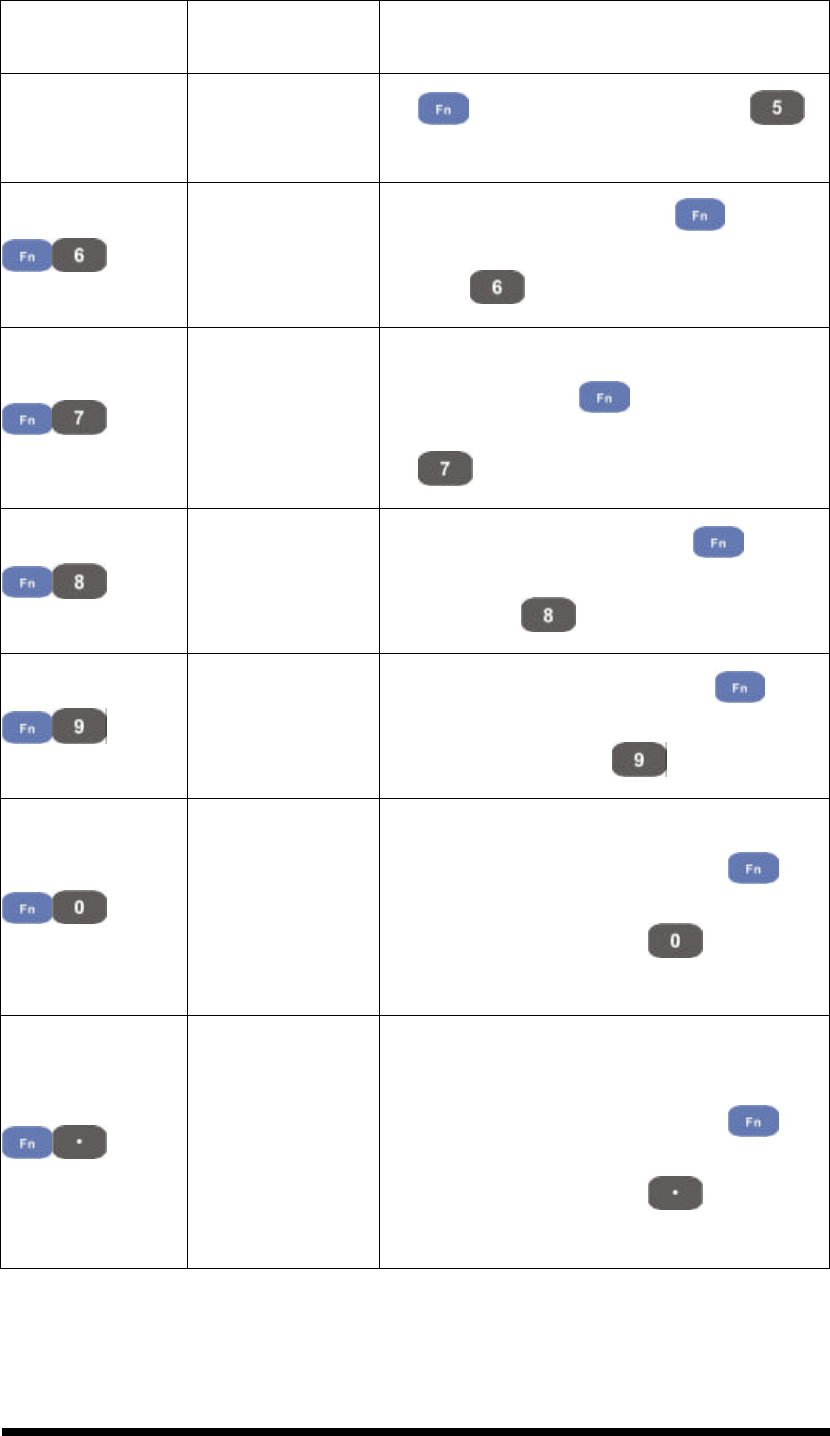
2-32
Key Sequence
Fn + Main
Function Definition
key first, and then pressing
key each time.
- (Minus Sign) Enter a minus sign by pressing key, then
pressing key.
Copy
3. Copy action.
4. You must press key, then press
key to do “Copy” action each time.
&
Enter an AND sign by pressing key,
then pressing key.
*
Enter an asterisk sign by pressing key
first, and then pressing key.
Start Menu
3. It displays the Start menu.
4. To do this function by pressing
key
first, and then pressing key each
time.
Space
3. The “Space” function is to move the
cursor one space.
4. To do this function by pressing
key
first, and then pressing key each
time.
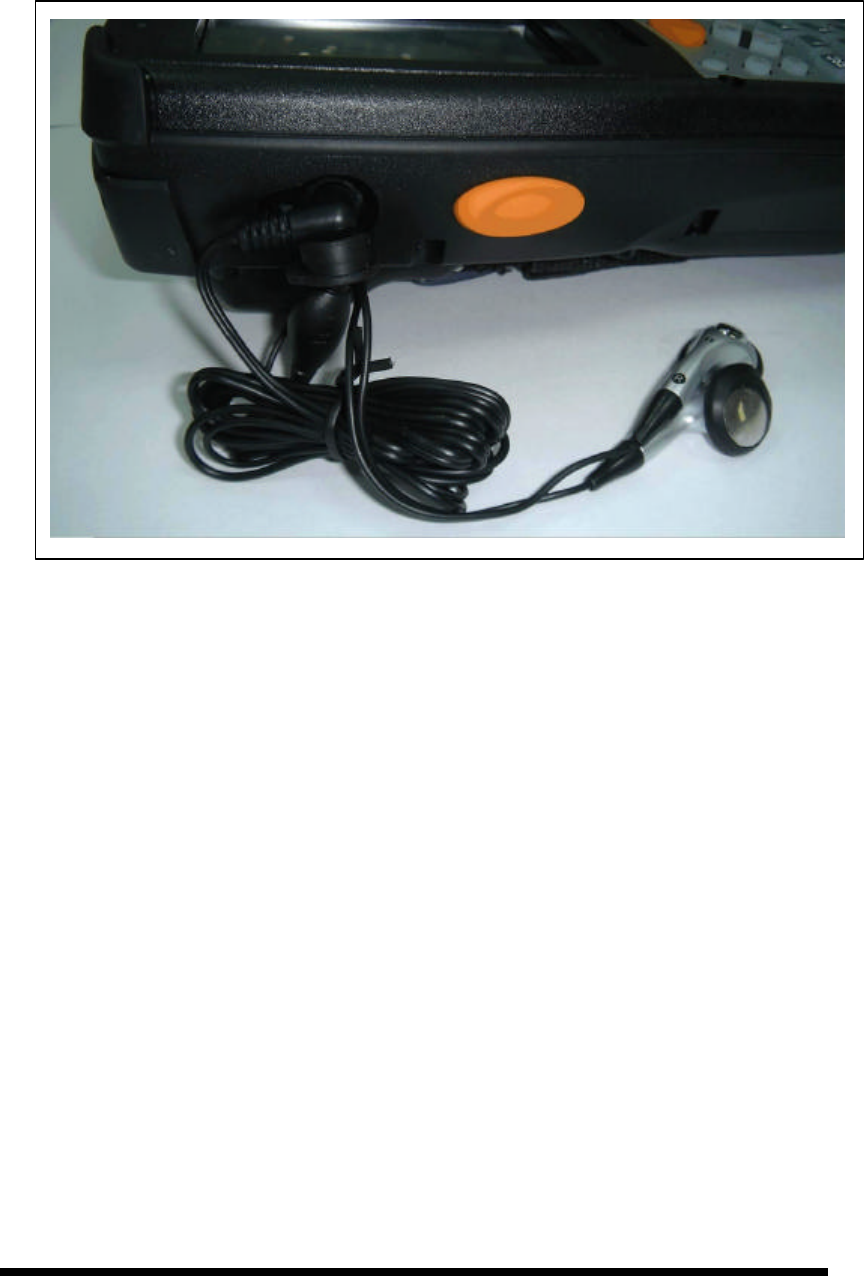
2-33
2.4.9 Using the Ear/Microphone
Connect Ear/Microphone to PDT earphone jack connector. The PDT is not built in
microphone; if you like to record the voice, you have to use Ear/Microphone.
Figure 2-17 Ear/Microphone